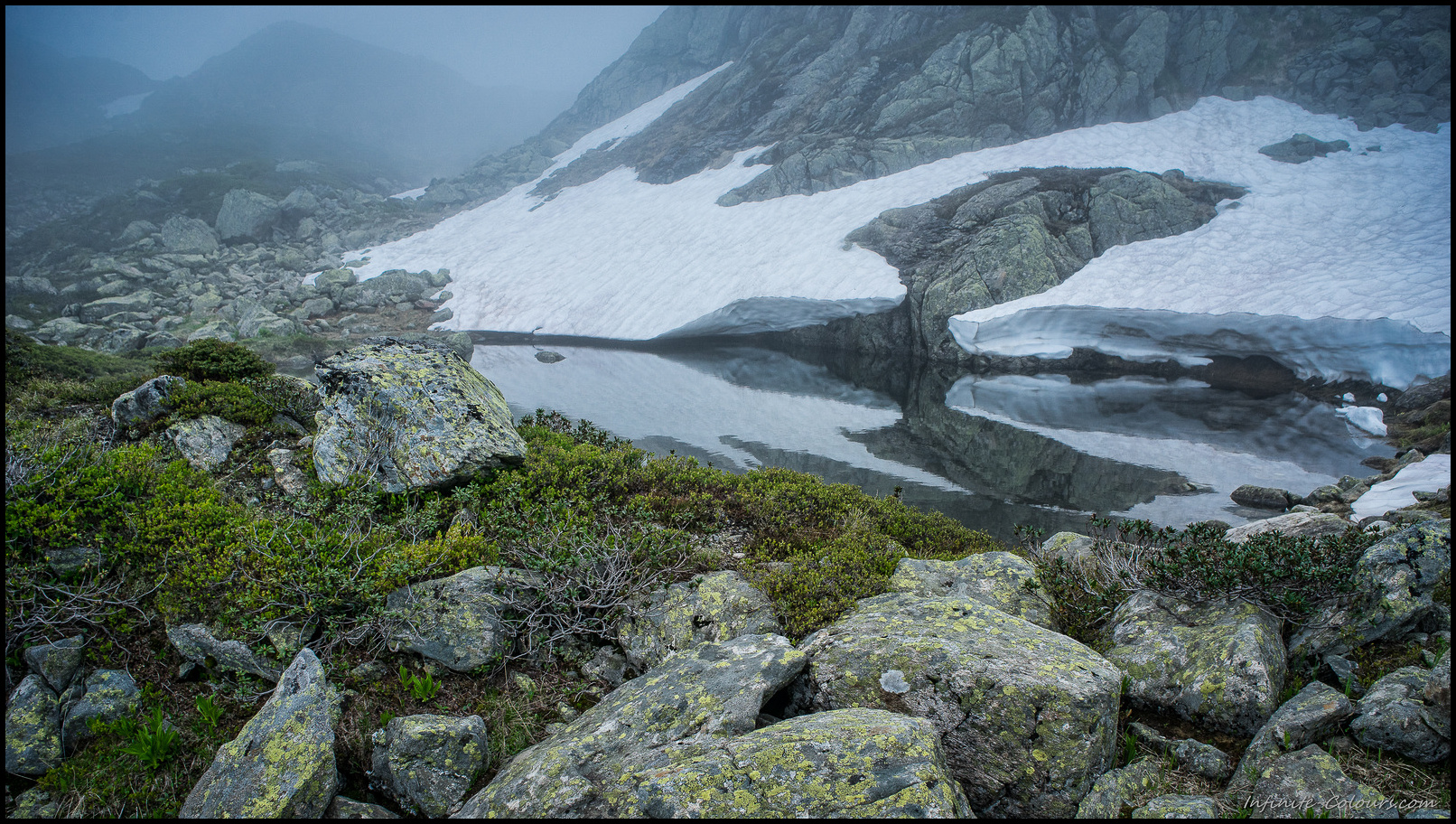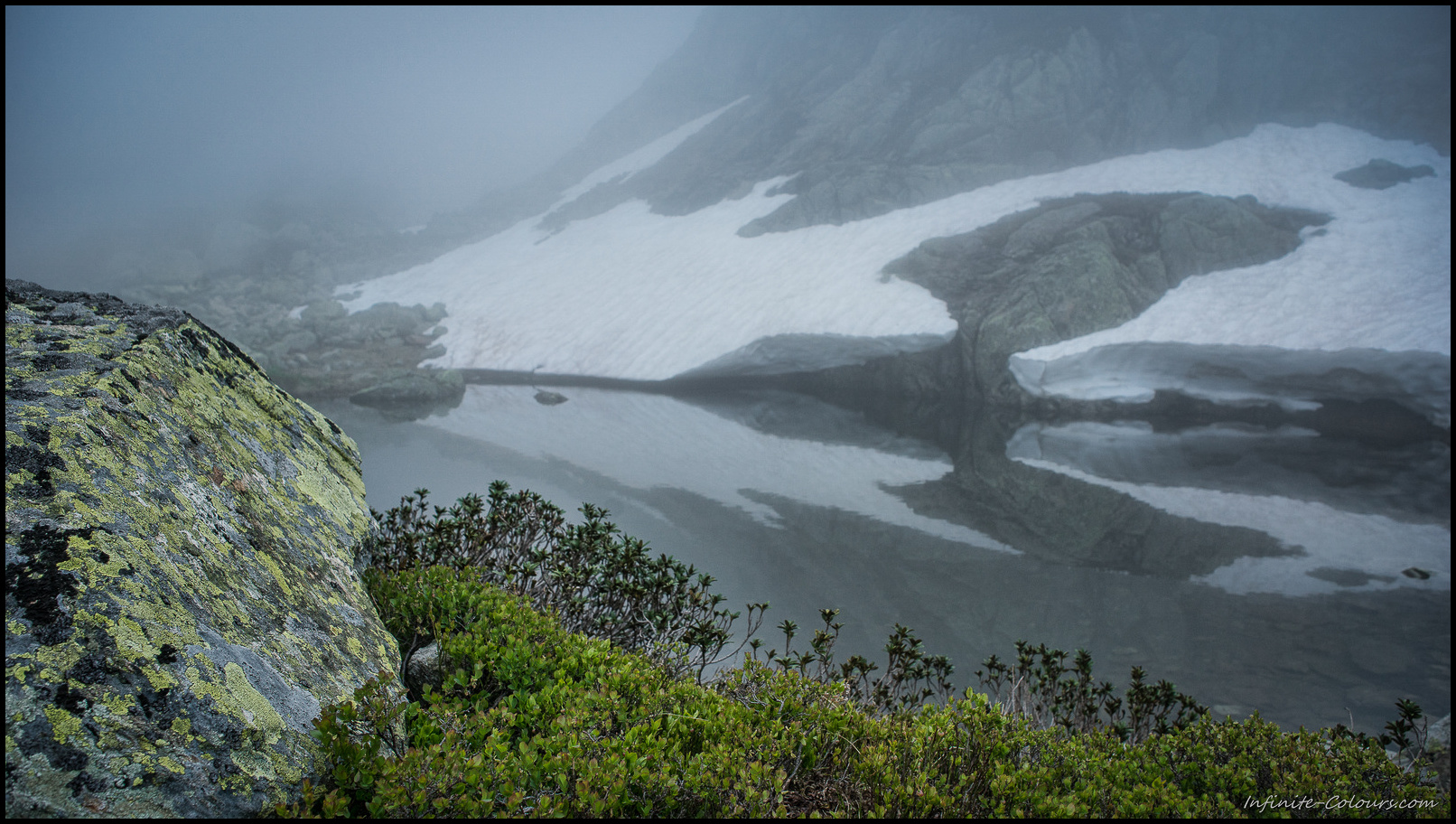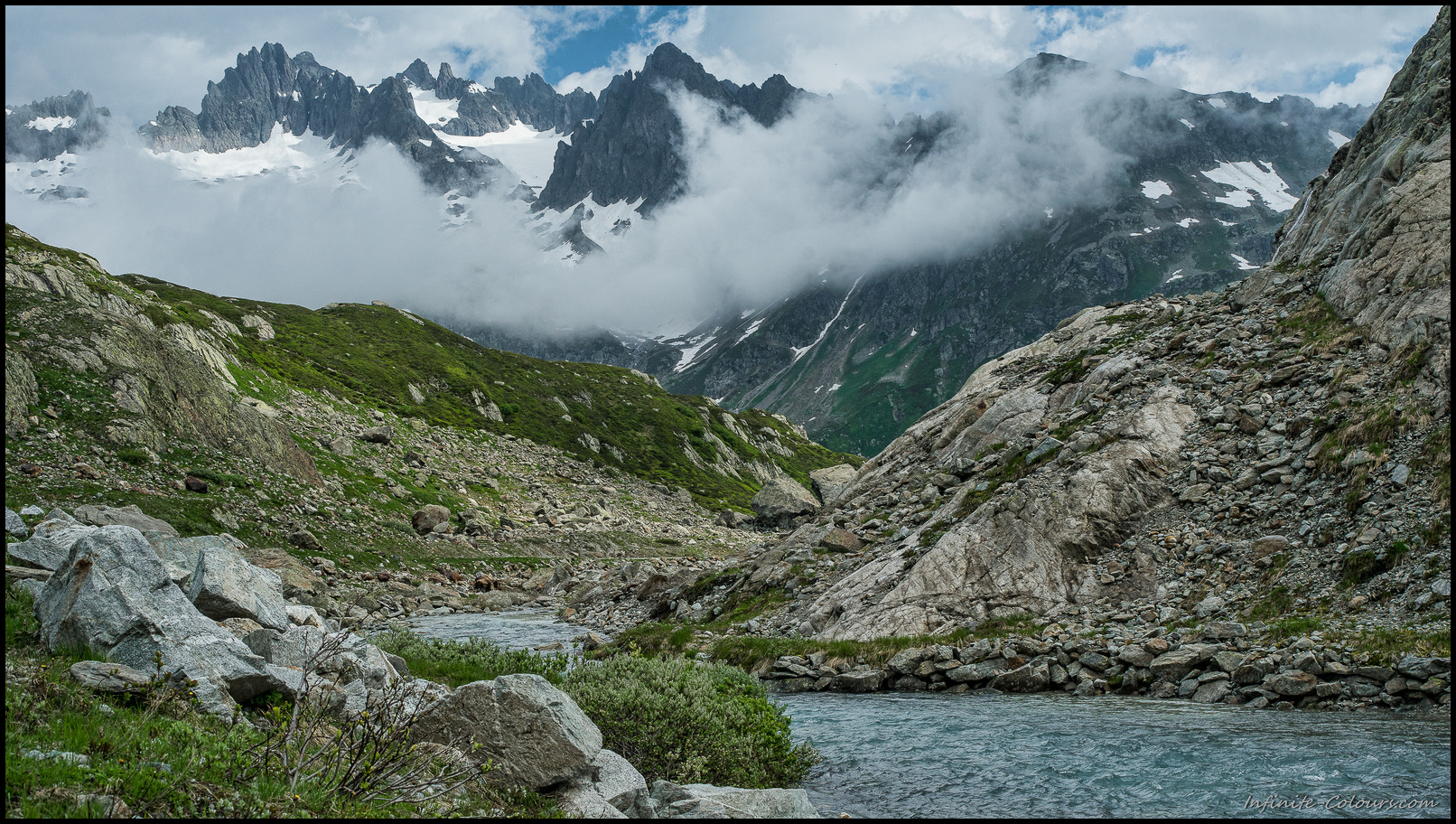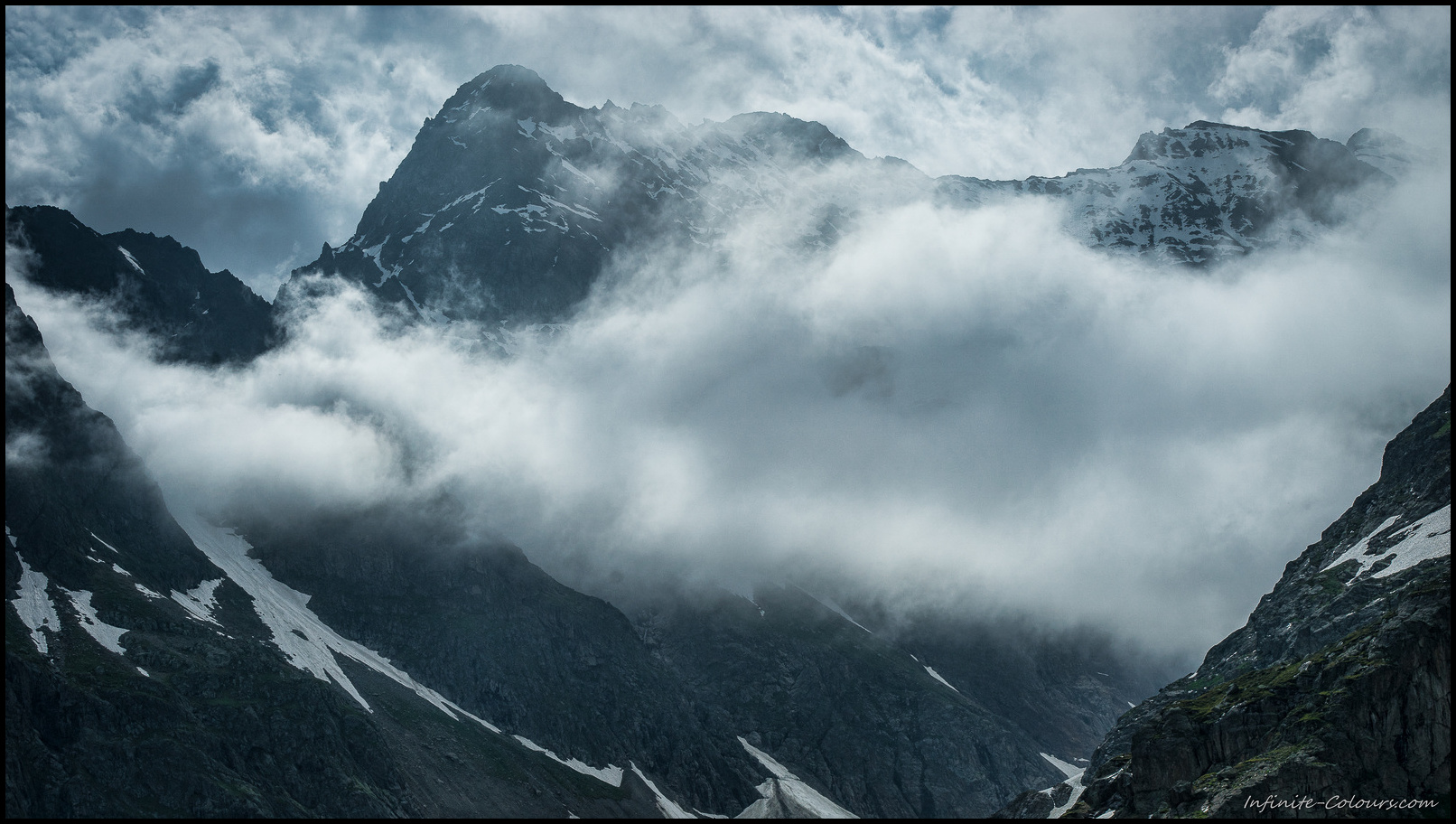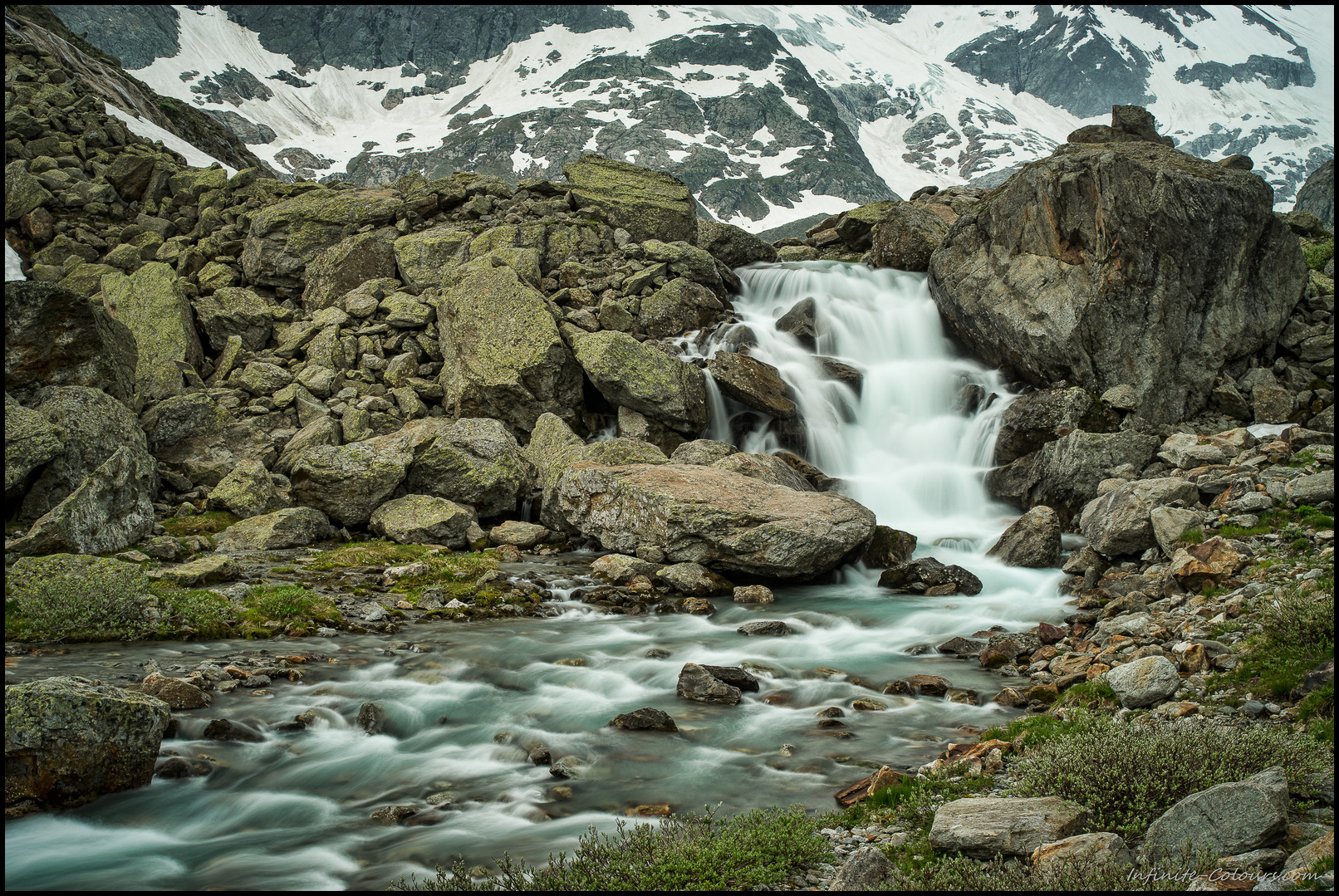Admitted – when planning a hiking holiday, we were tempted to think that great experiences and scenery come at the inevitable cost of an eight hour plane flight – we seemed to ignore what awaits us right at our doorstep in europe. We finally decided to give our alps a first try, in the swiss cantons of Wallis and Bern, to be a bit more precise.
Really loving the backcountry/bivy combo, we’ve been thrilled to learn that bivouacking is allowed in most places in Switzerland above the treeline and outside of private property. First stop was the Binntal in Wallis, literally just a stone’s throw north of the italian border. It’s a gorgeous place, reached by a narrow and winding road branching off south of Fiesch, the gateway to the famous Aletsch glacier. During most of the ascend to the Geisspfadsee, the Mässerbach is within earshot. The Mässerbach a beautiful and pristine alpine stream that is constantly fed by the ~2800m mountain range bordering switzerland and italy between Punta Marani and Gross Schinhorn.
We started in excellent weather, but the conditions declined in terms of strong wind gusts and unfriendly looking cloud formations as we reached the Mässersee plateau.
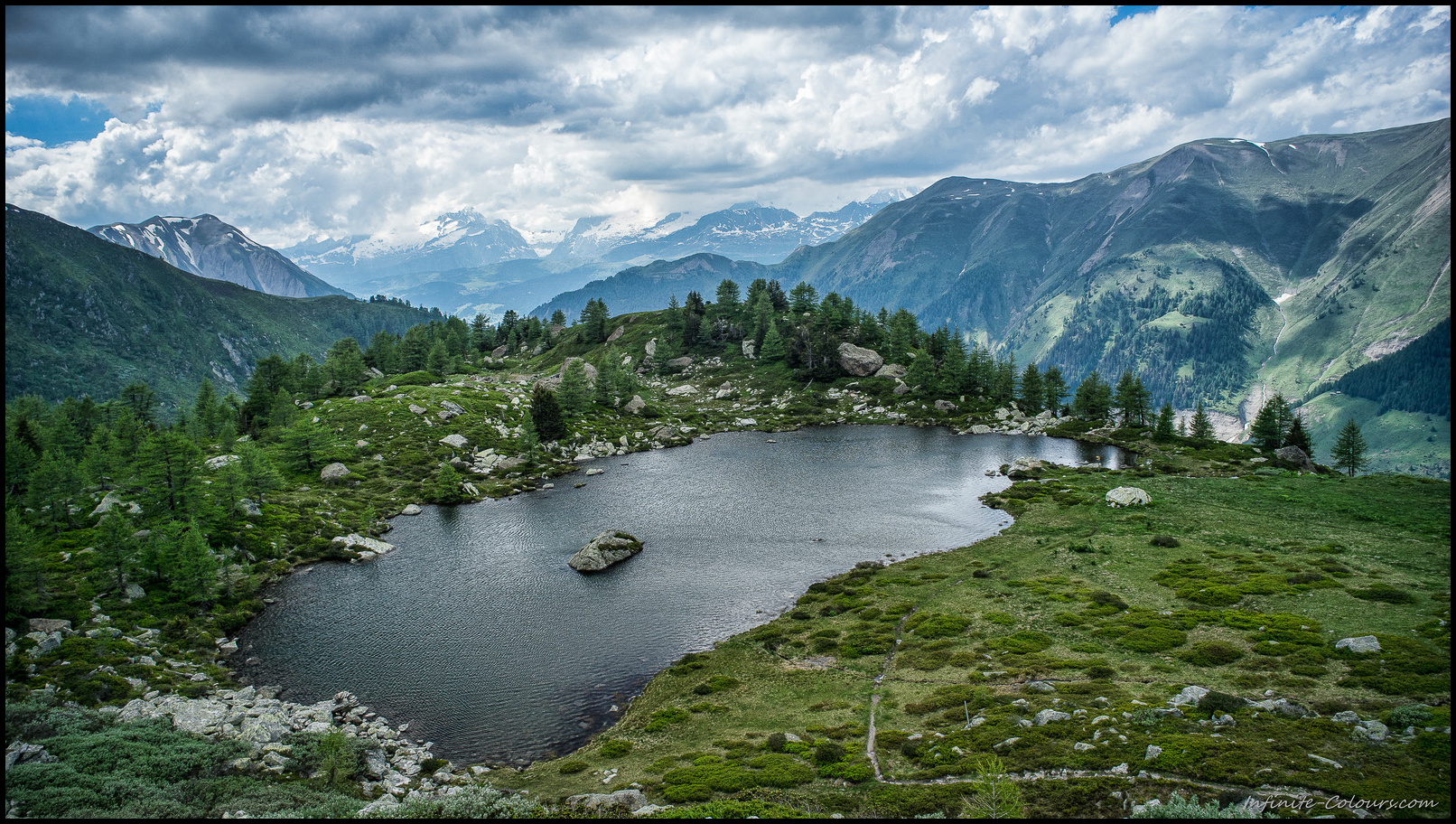
As an outflow of the Züesee, the Mässerbach starts its journey as an impressive torrent raging down into the high valley.
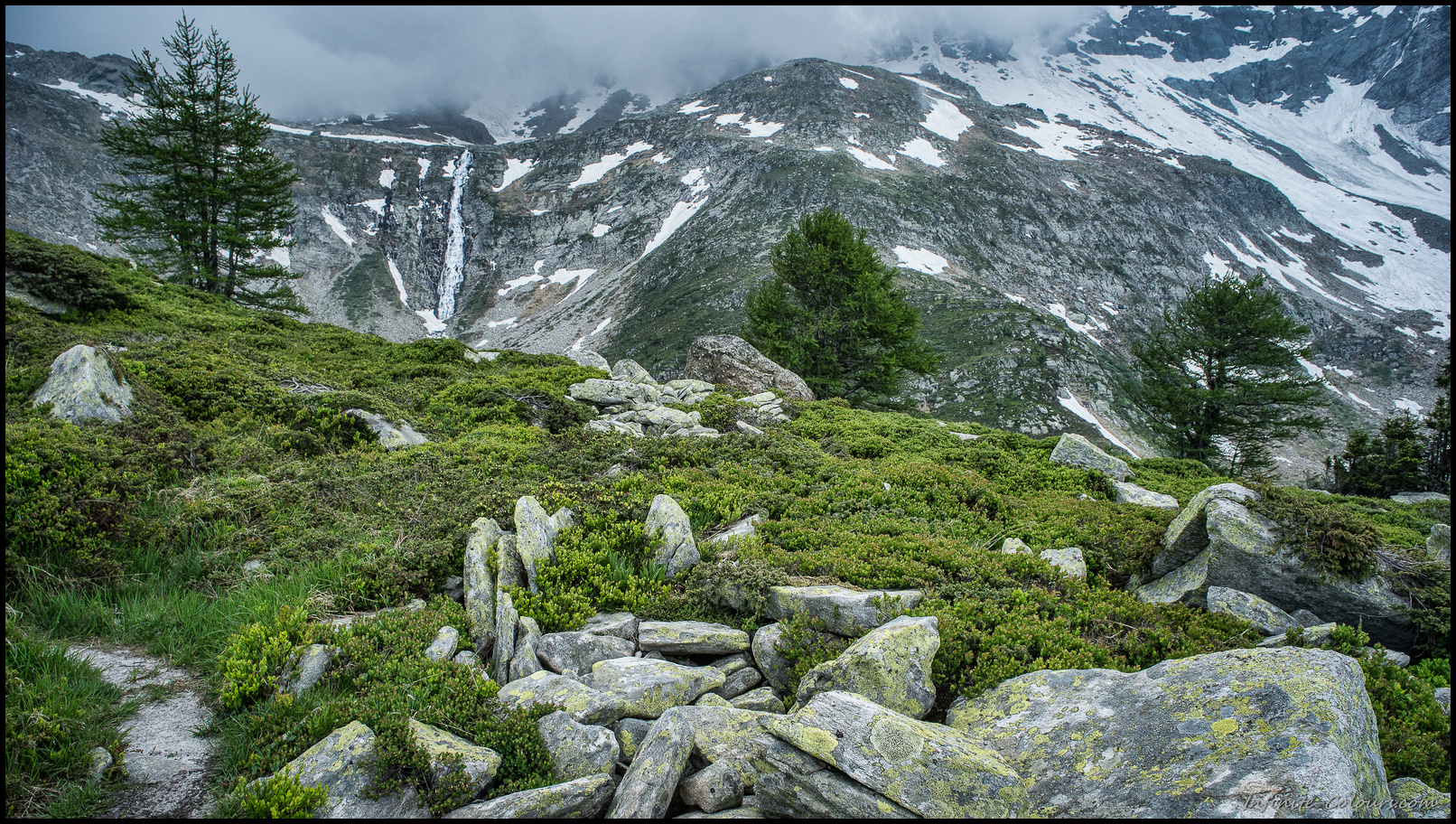
Due to the intimidating mood in the air, we discarded our plan to trek up to the Geisspfadsee area to look for a place to bivy. Instead, we found a sublime spot right a the banks of the crystal clear Mässerbach – when the sun came out later that day again, the colour and clarity of the water in the ponds seemed almost surreal.
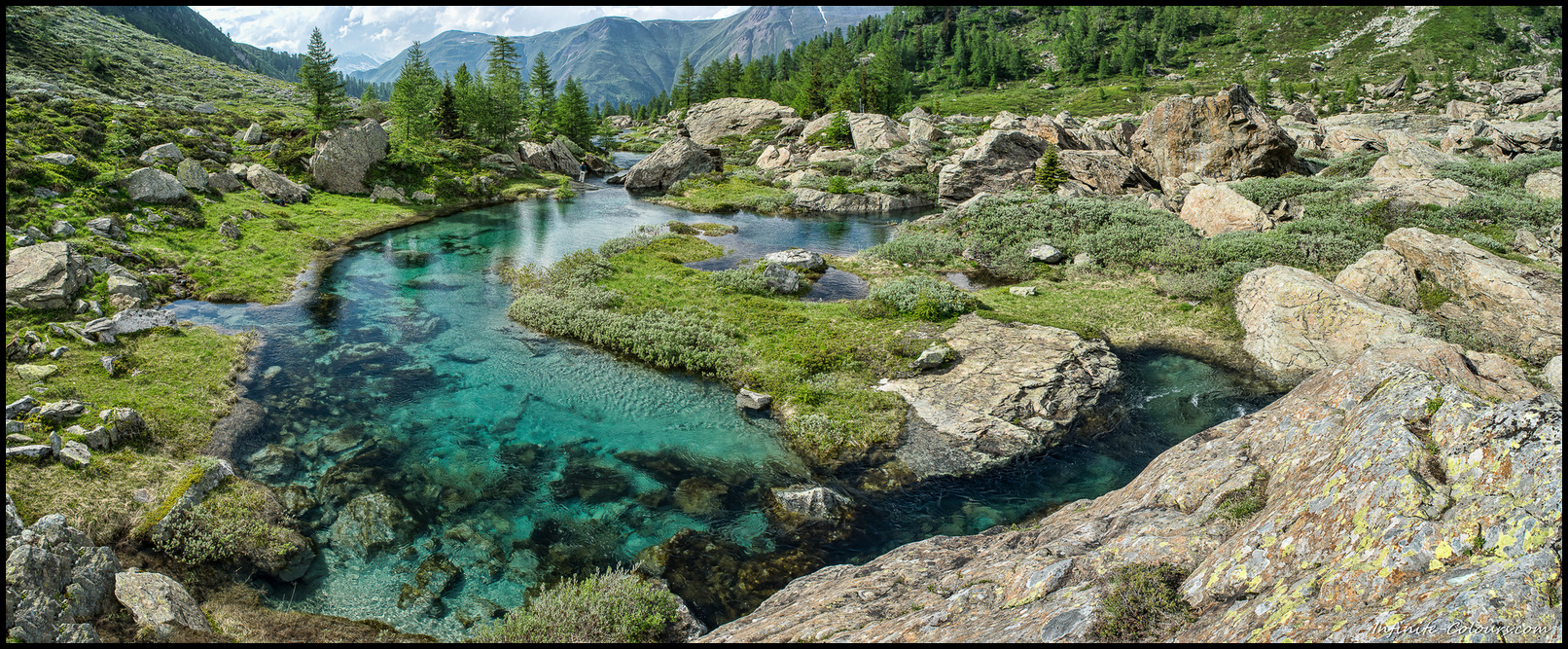
The scenery is vast and incredibly beautiful, plus there haven’t been any people after 4pm. In the background the Gross Schinhorn and Passo dei Laghi loom over the Mässerbach hanging valley and catch the stream’s water.
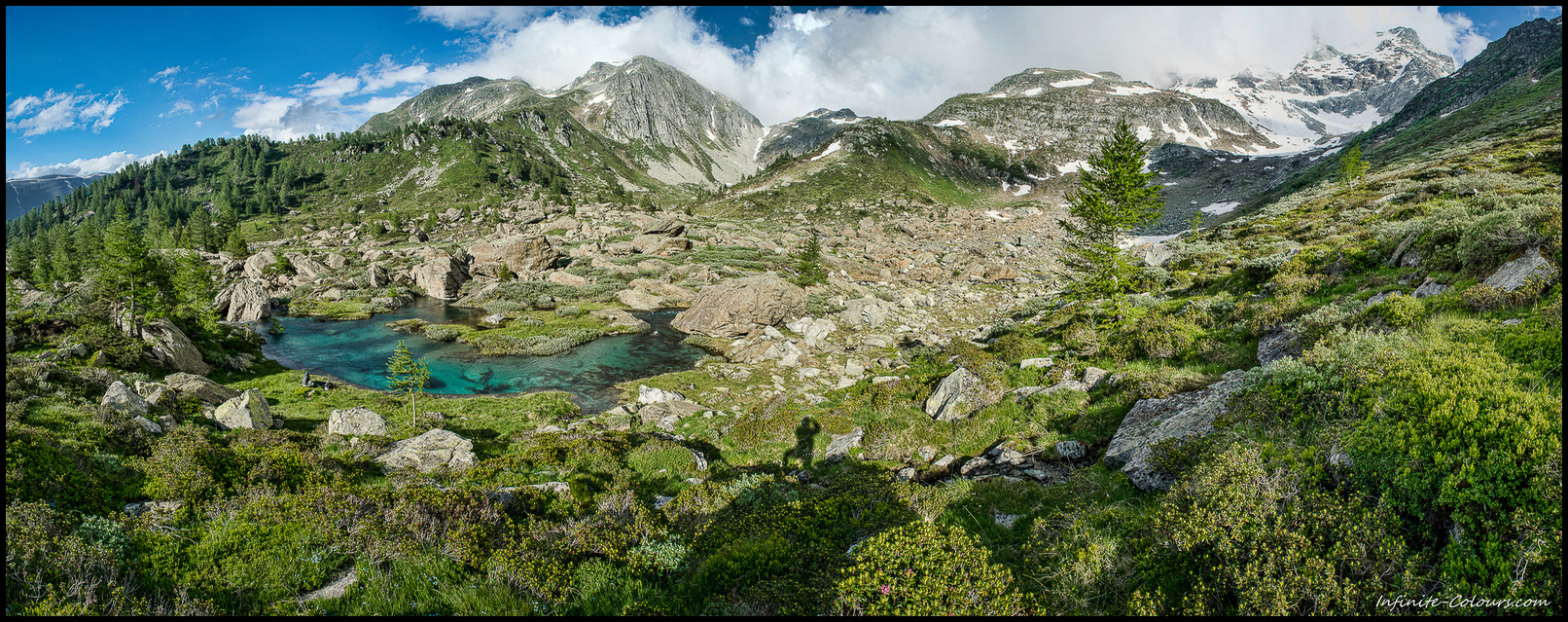
It was a bit of a bushwhack to get to this spot (and back out again) but very much worth the effort. Finding level and dry ground wasn’t easy here but we managed to find a good place, sheltered from the breeze.
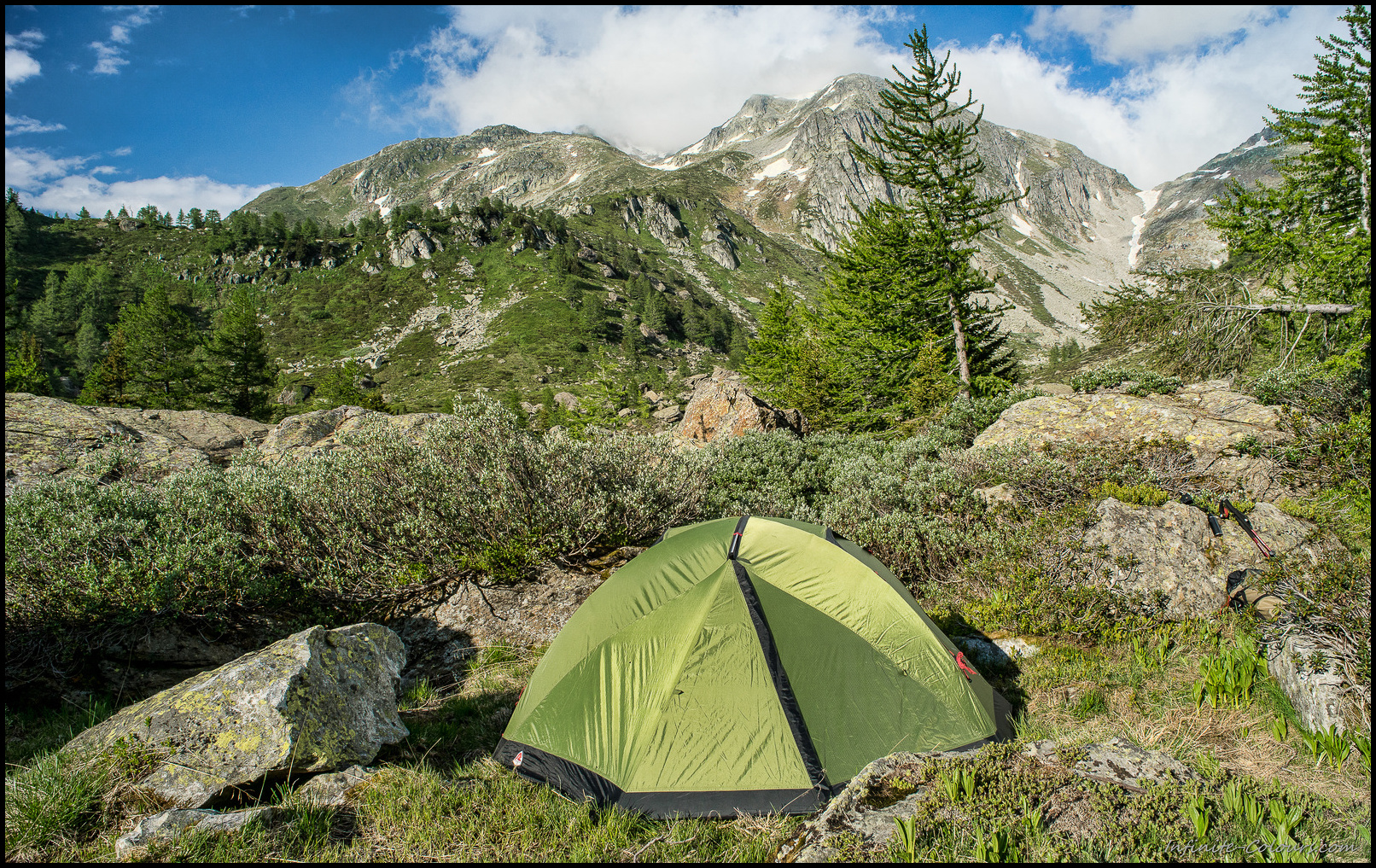
As soon as the sun began hiding behind the western ridge, the wind started bashing up again and temperatures dropped significantly. The mood of the whole scenery changed dramatically and it was easy to imagine that this exposed place wouldn’t be your first choice to overnight in real bad weather.
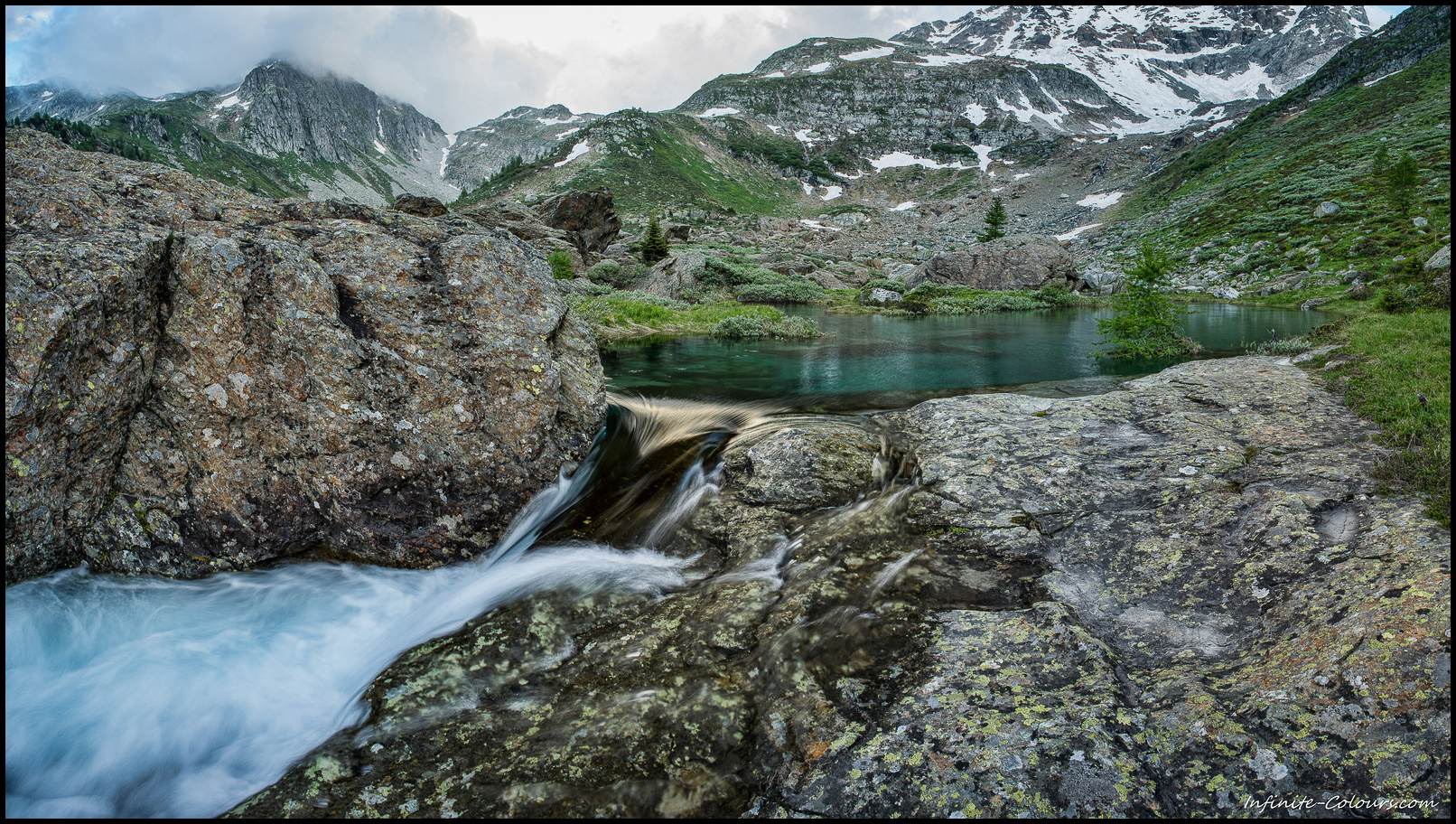
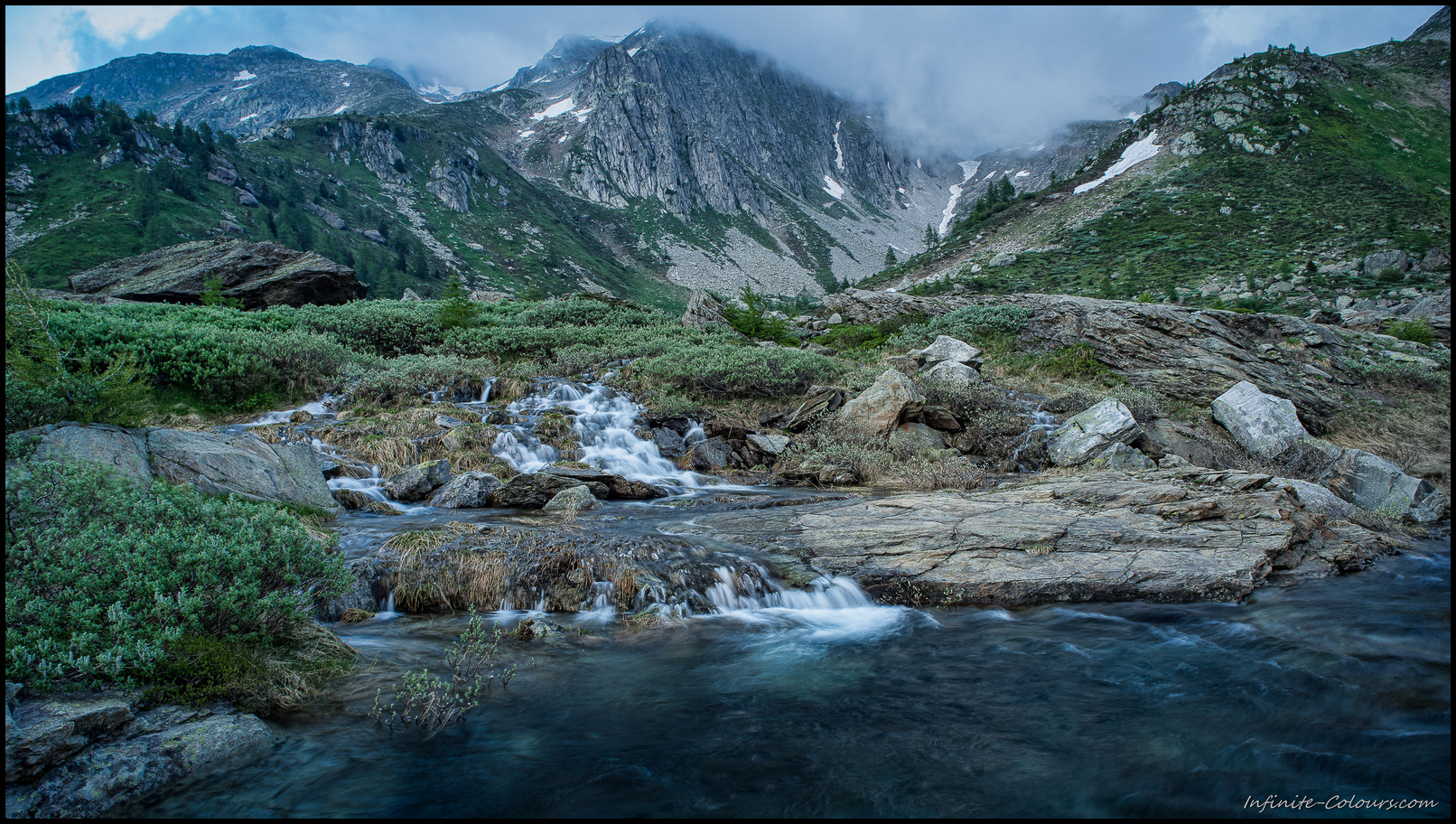
Waking up in this place was awesome, and the moody weather of the day before was forgotten when the sun invited for breakfast. Truly a piece of alpine paradise. We were happy to see that, apart from a small fire place, prior visitors seemed to respect this special place as we did not find any rubbish scattered around. Thumbs up!
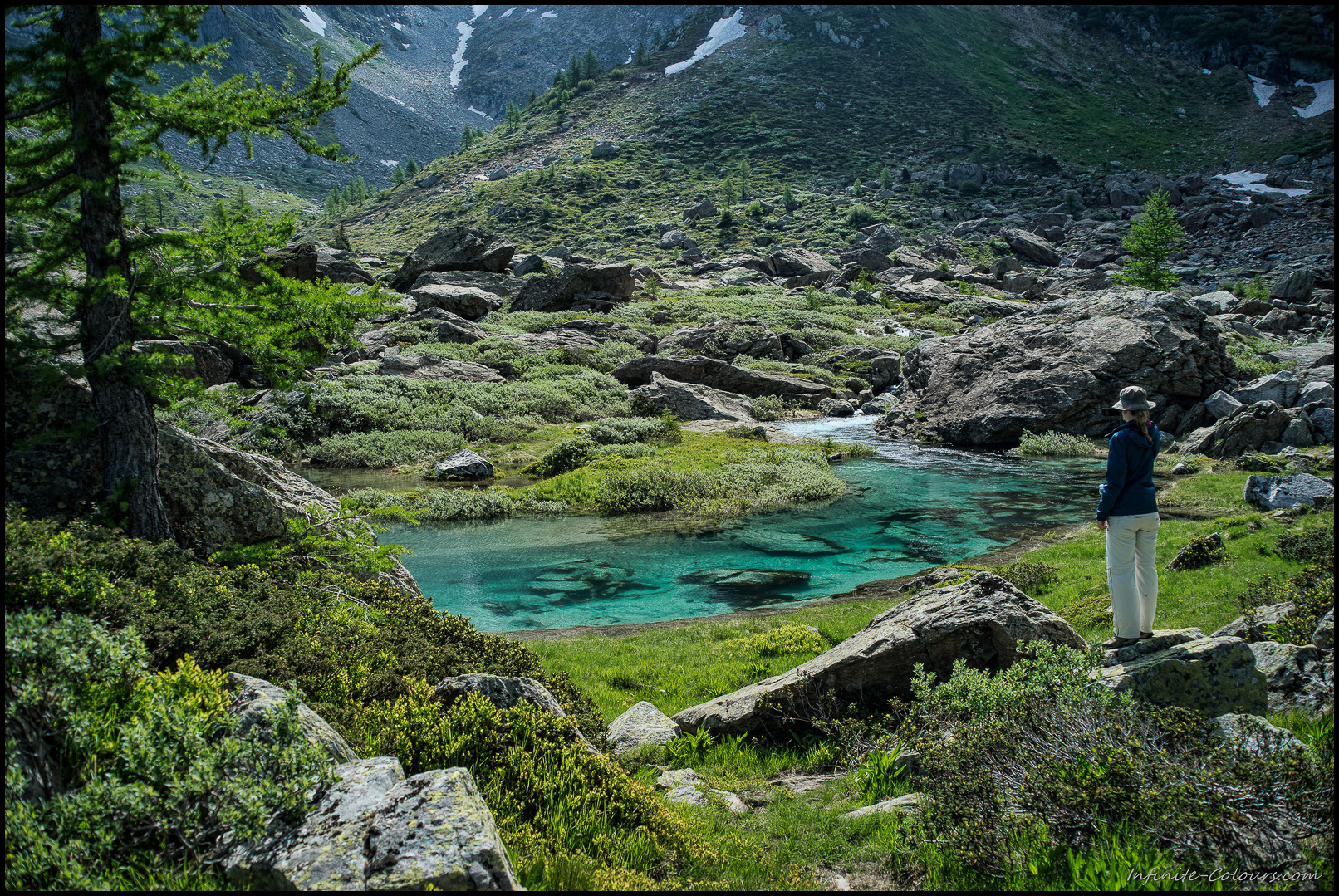
After breafast we realized that we had to head back to the valley and reluctantly packed our stuff. Time flew by as we were following the stream down to the small village of Fäld, chatting that we’d definitely have to come back for a swim one day.
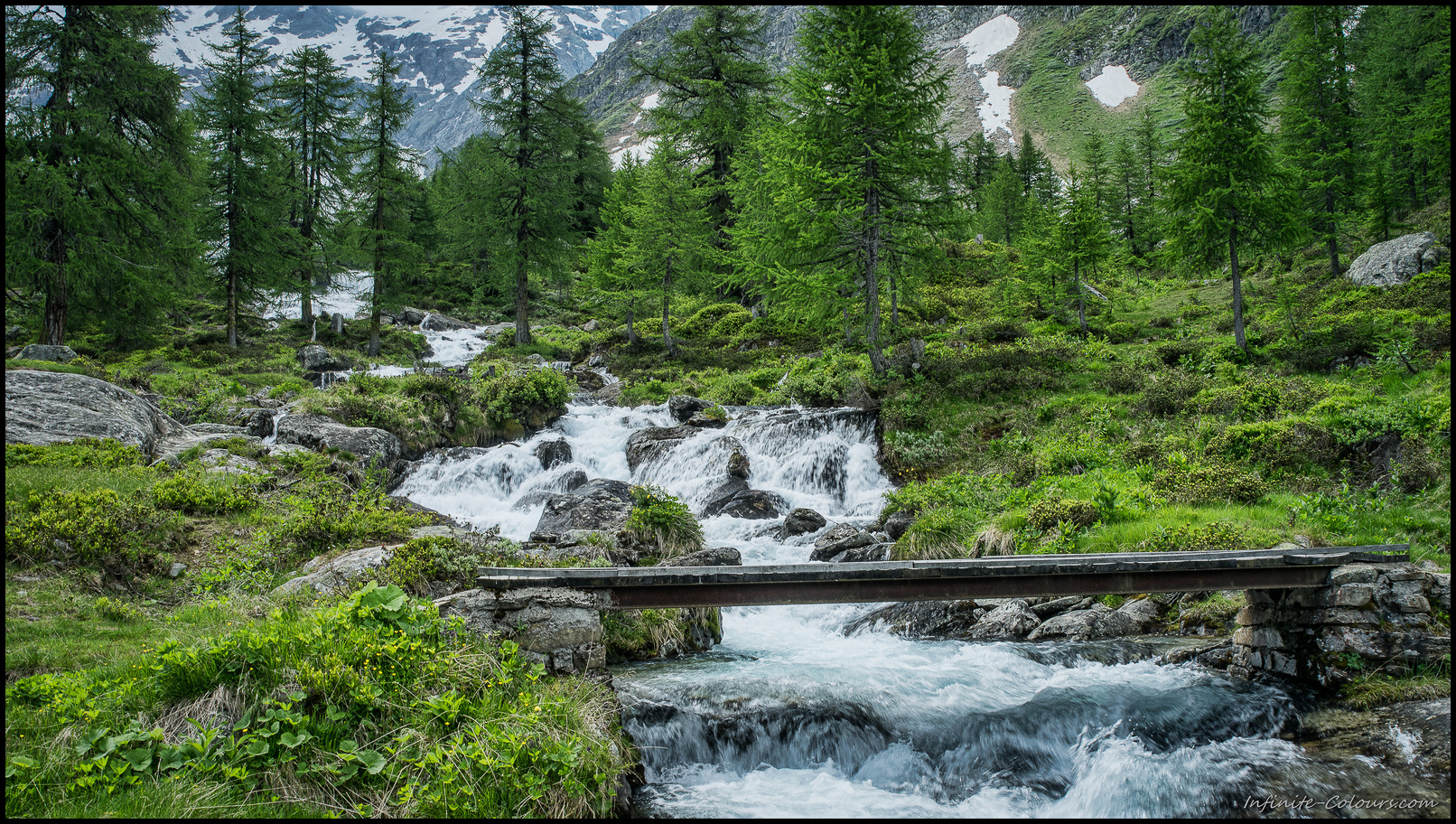
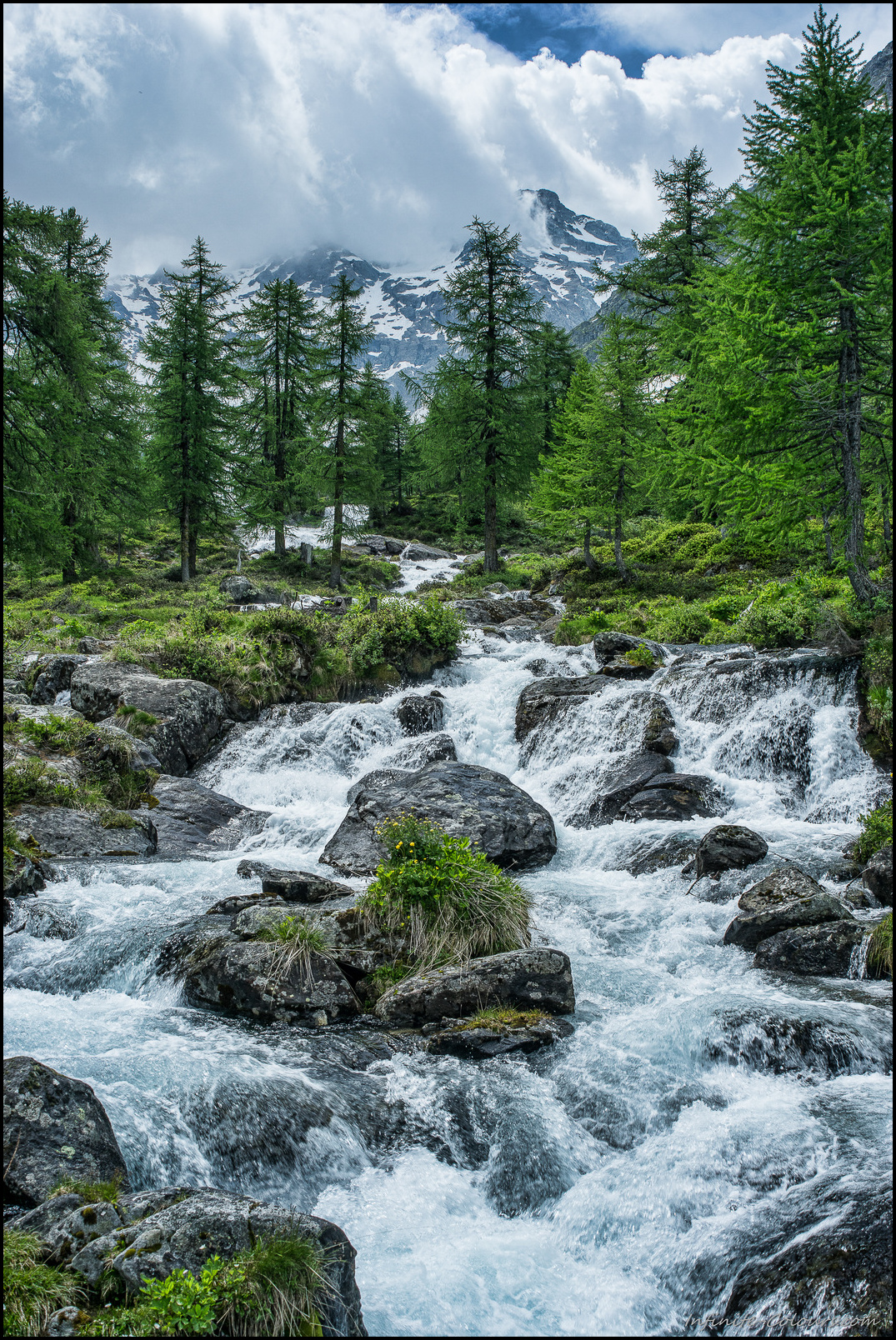
After a brief Feldschlößchen-pitstop in Fäld, we went on to Fiesch to catch the cable car up to the Fiescheralp. The initial plan to take the high route from Bettmeralp to Märjelensee had to be abandoned because the track was still closed due to winter conditions and we were in early summer-mode, not bringing gaiters or anything along that would have made the ~14km of snow and ice worthwile.
Instead we took the easy route from Fiescheralp via Tälligrattunnel, a unique tunnel now used by hikers but which was initially build in the late 19th century to drain water out of the Märjelensee if water levels got too high. Tackling a 1000m underpass that cuts right through the heart of an alpine ridge, with water dripping from the ceiling and a heart-freezing temperature drop, we had our personal walk towards the light experience.
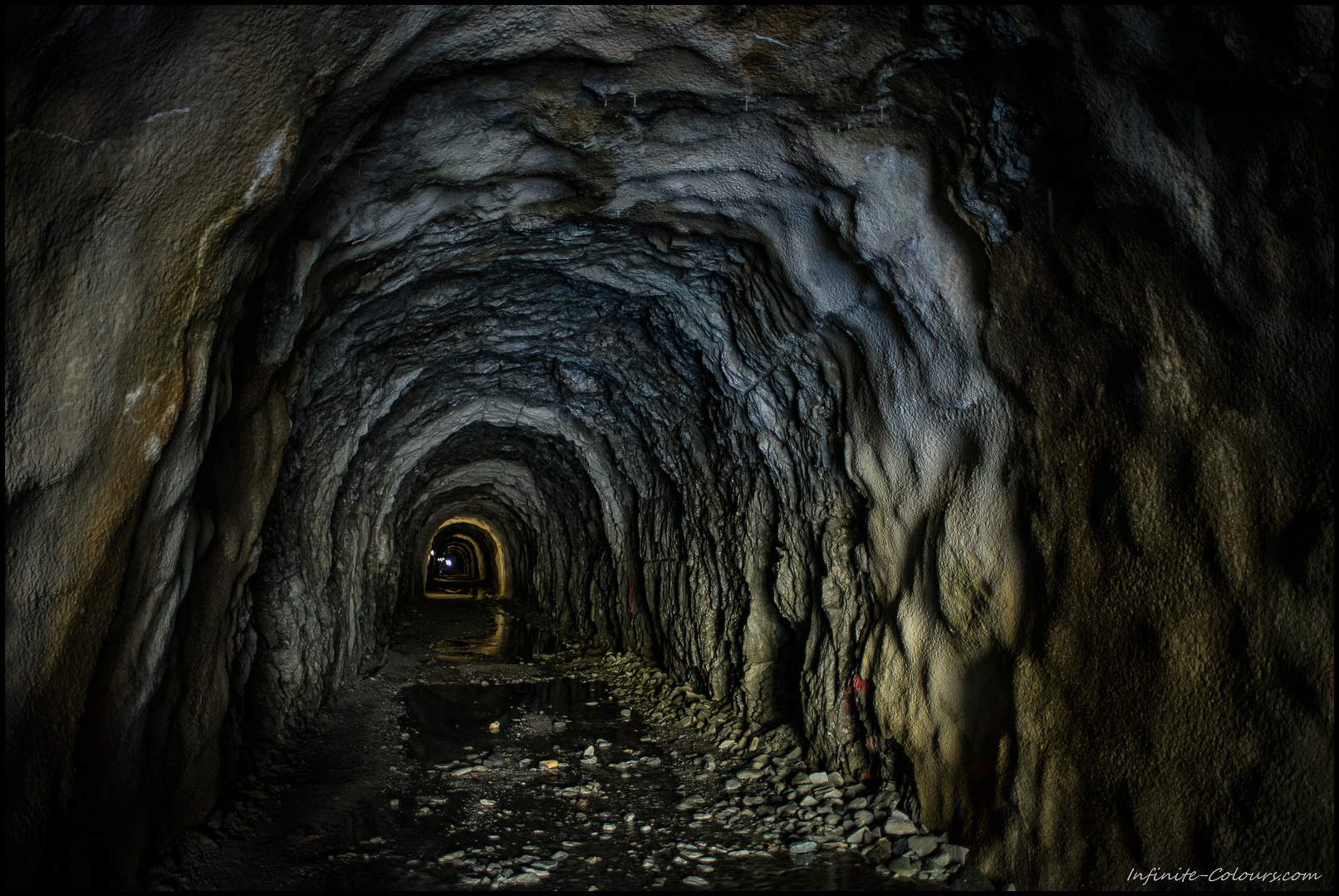
On the other end, we were greeted by heavy rain and low clouds as – surprise – the weather on this side of the ridge was way different than what we had before. However, the rains gradually ceased and we stepped out of the tunnel, heading on to look out for a level patch of soil around the Märjelensee. After a couple of minutes we ran into a phenomenal spot next to a small tarn, with stupendous views of the upper part of the glacier!
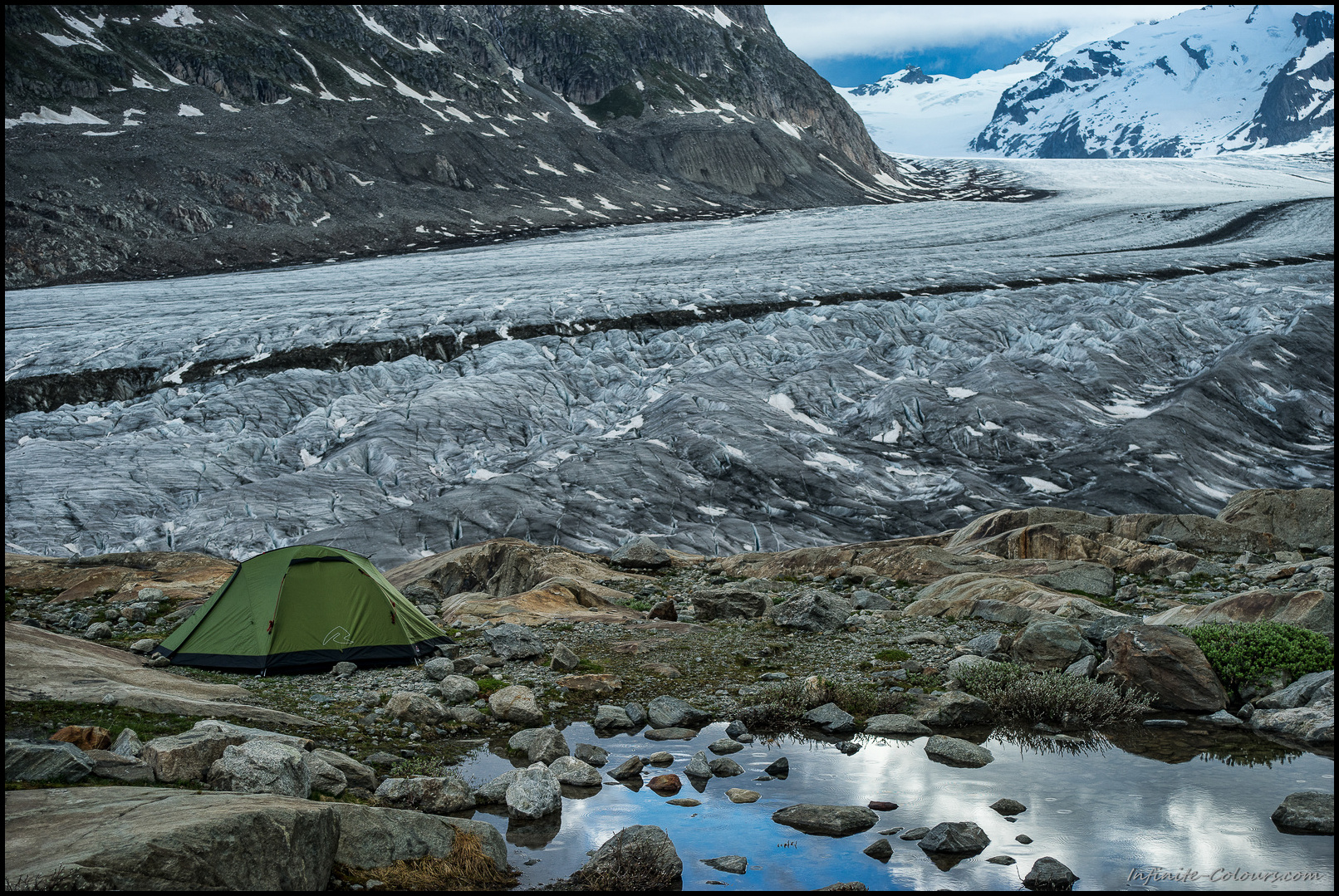
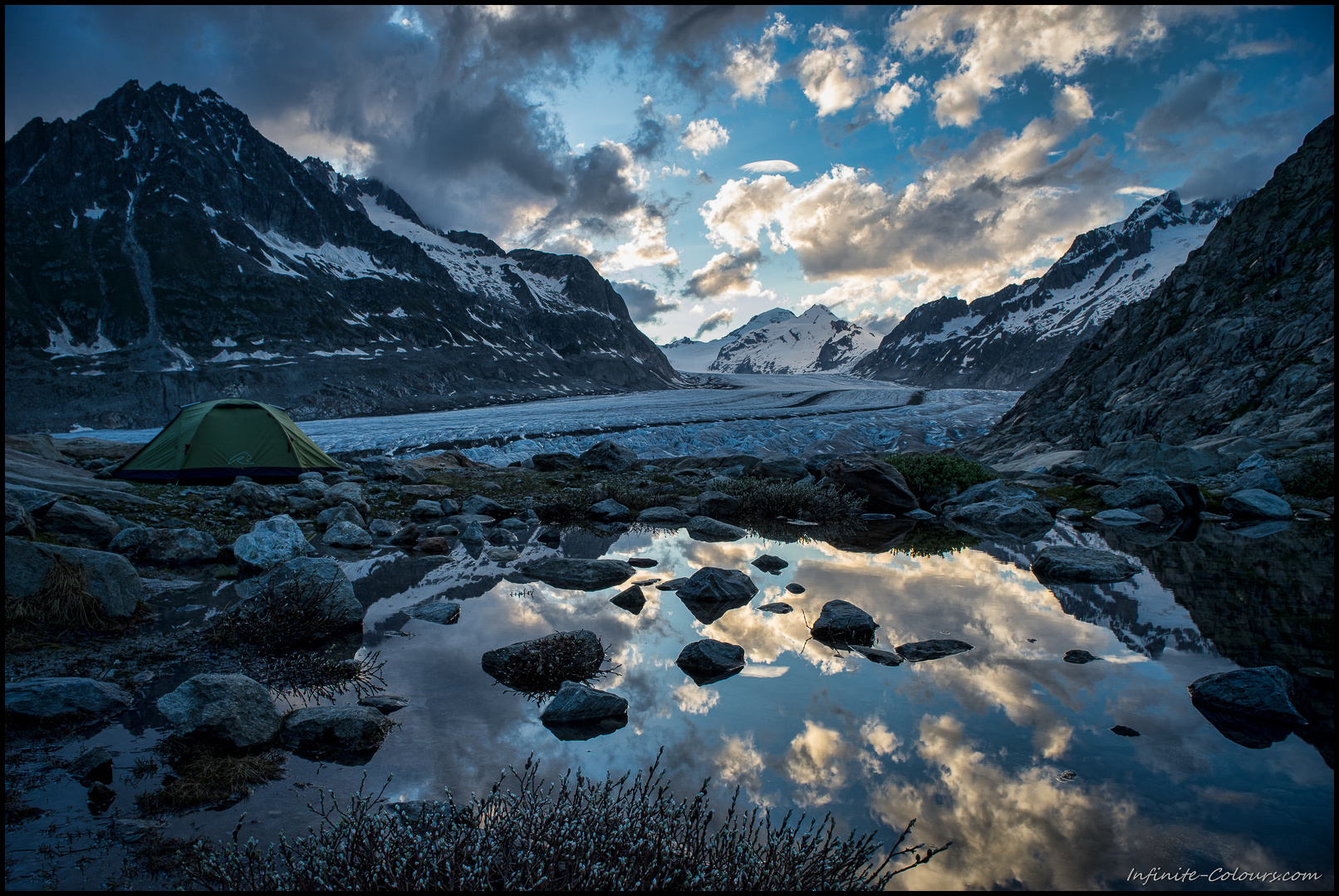
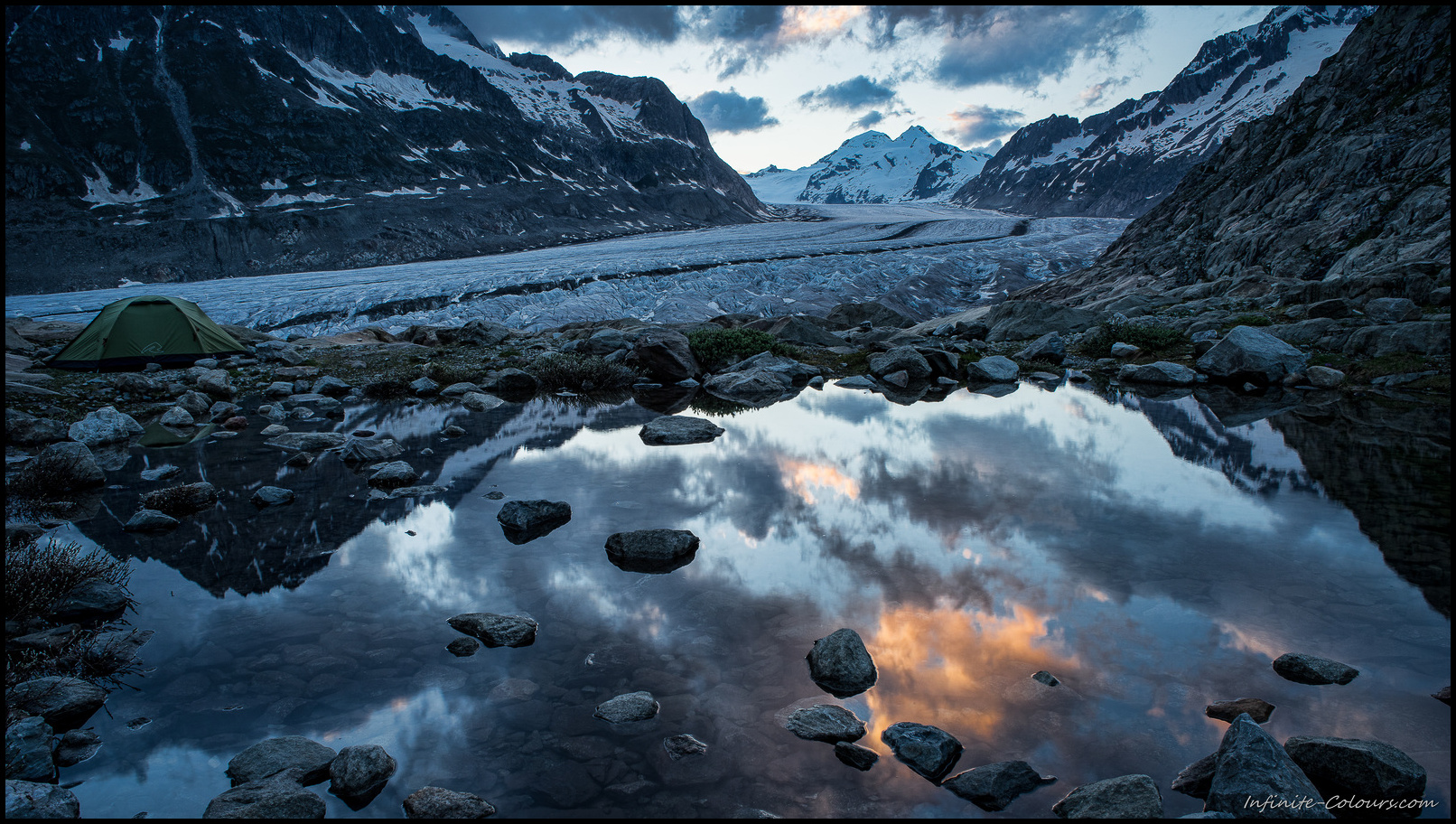
As expected, the night was freezing but still, we managed to oversleep and to miss first rays of the sun. It must have been phenomenal.. Anyways, we were thrilled to wake up at a place like this, with the warmth of the sun already in full swing. It’s been really special and way more beautiful than expected.
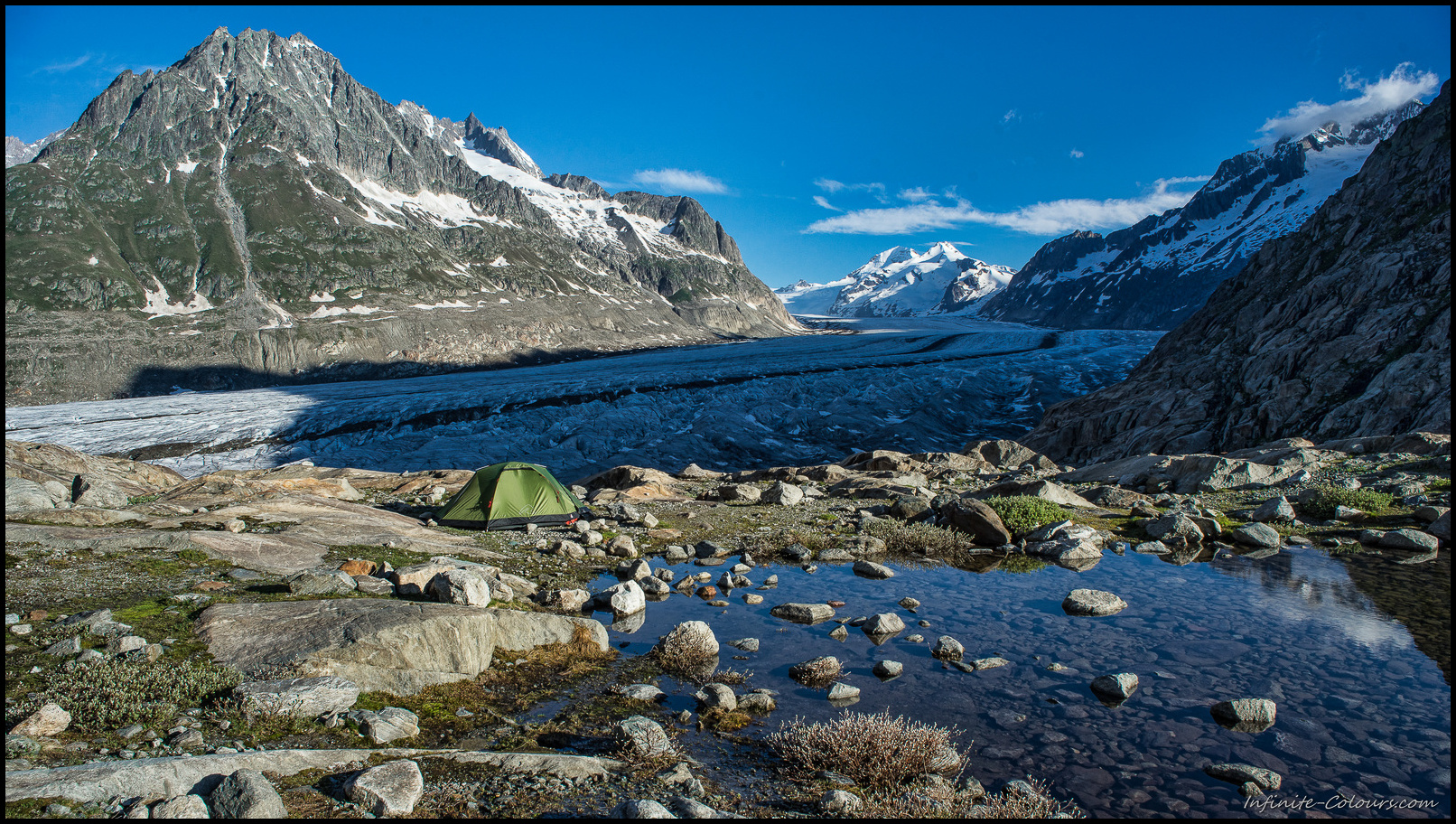
We quickly packed the tent and had breakfast with probably some of the best views ever, followed by a stroll around the glacier’s edge in sublime weather. Having this great place all to ourselves felt really special.
Although receding, the Aletsch still is by far the biggest glacier of the alps. There are spots where you can walk right down to the glacier’s edge, always keeping some distance though as there might be ice breaking down anytime.
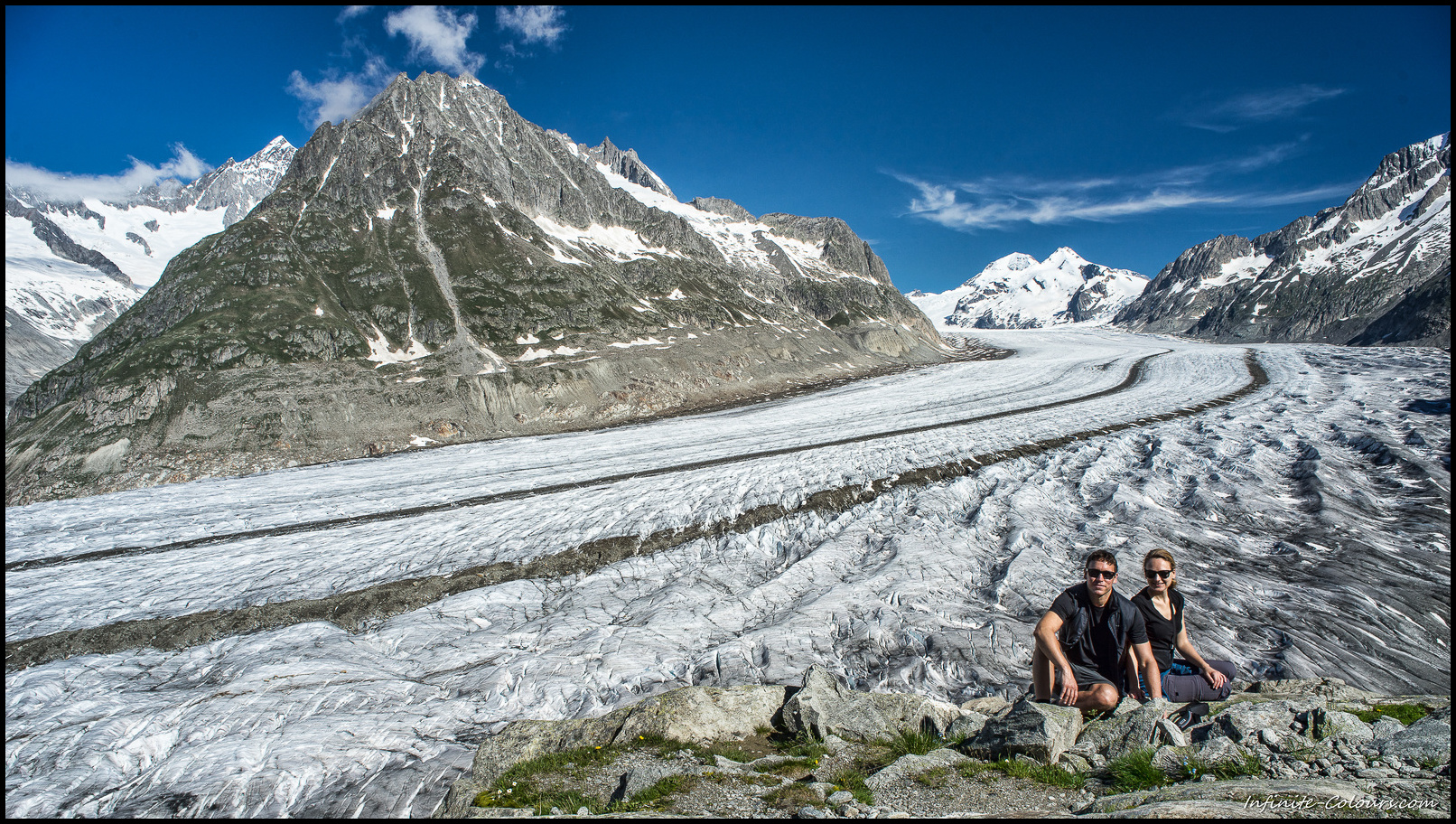
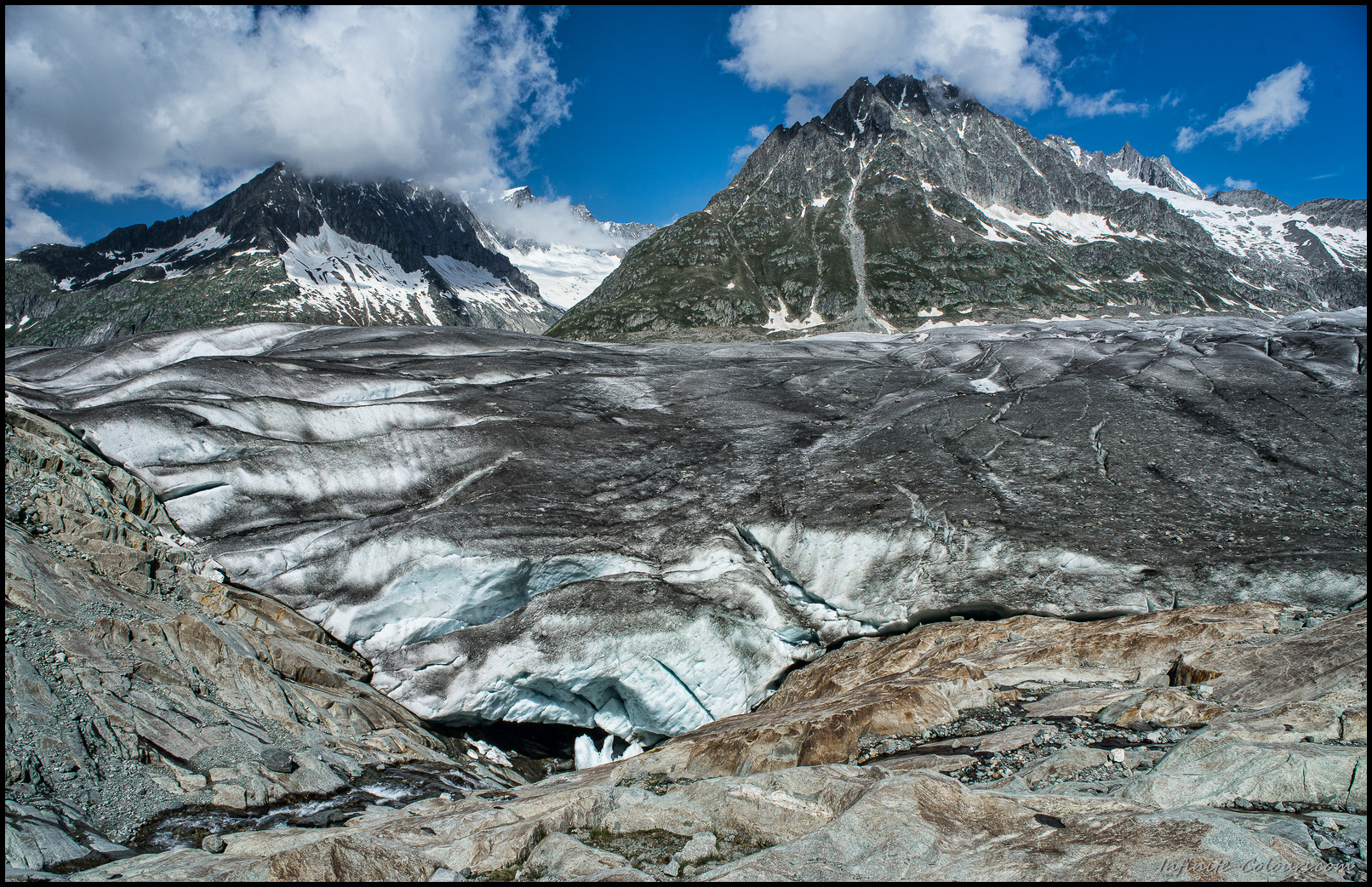
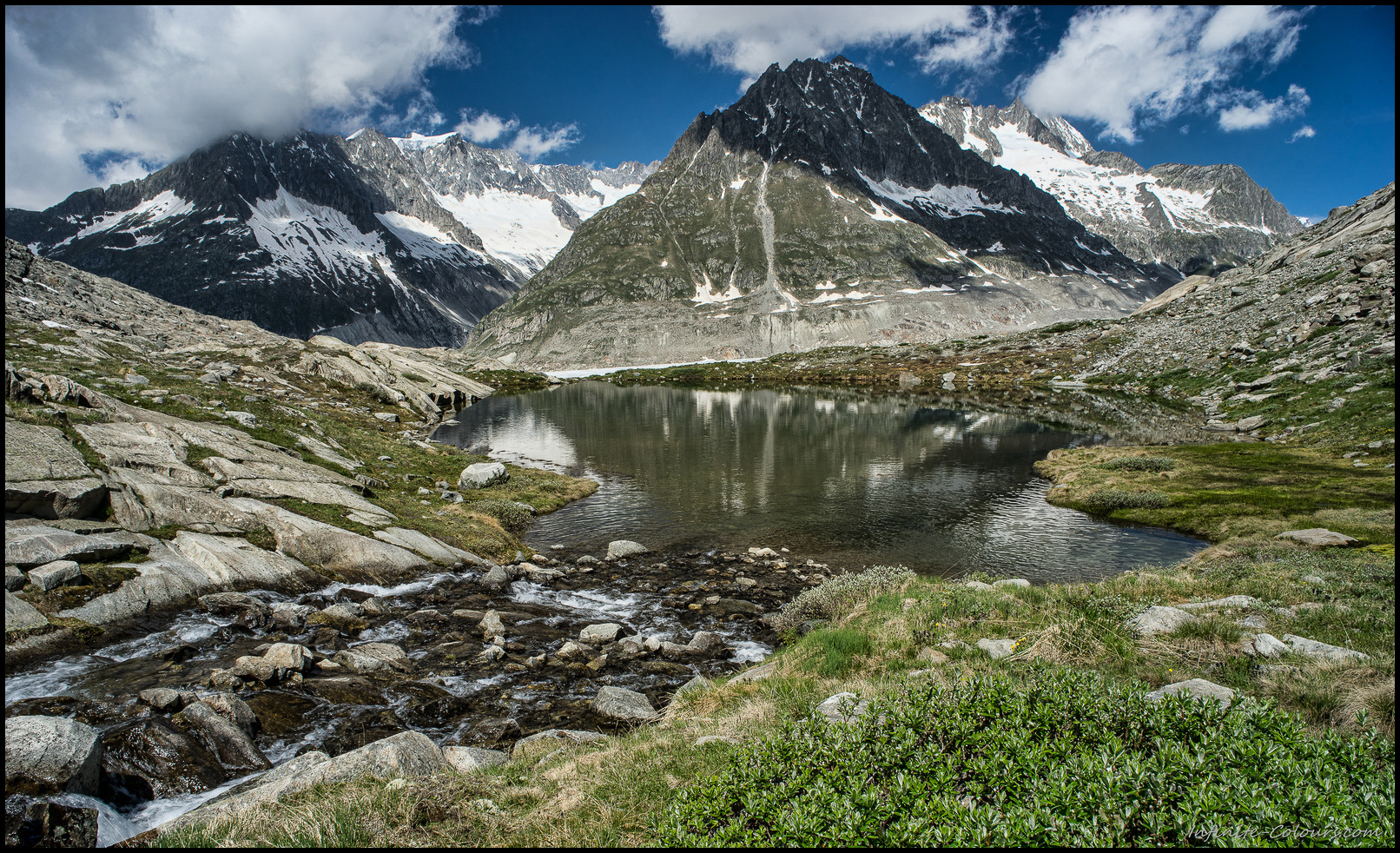
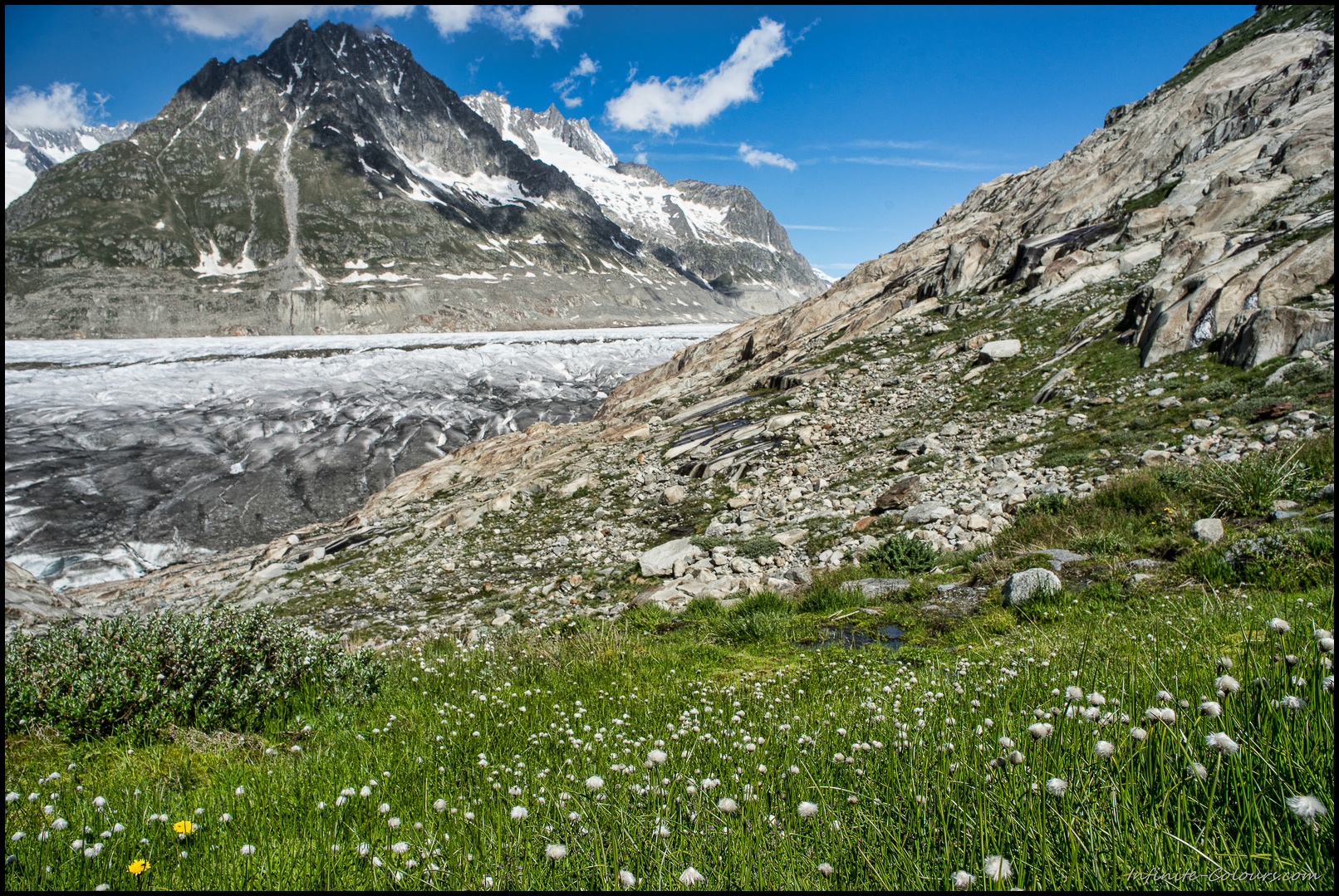
The last stop on our tour was the Tierbergli area around the Sustenpass in Gadmen, canton Bern. Another gorgeous area with towering peaks, alpine lakes and glaciers.
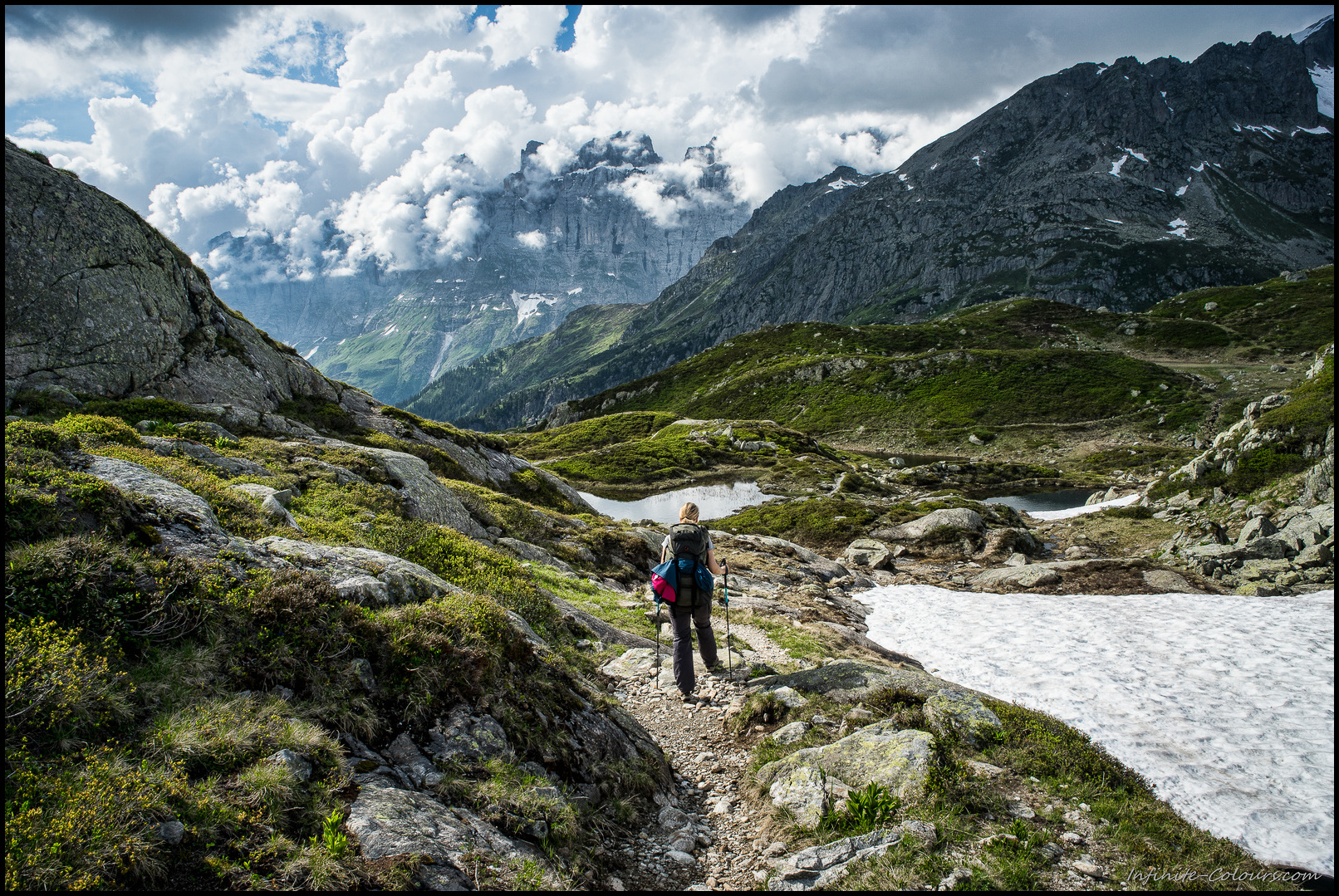
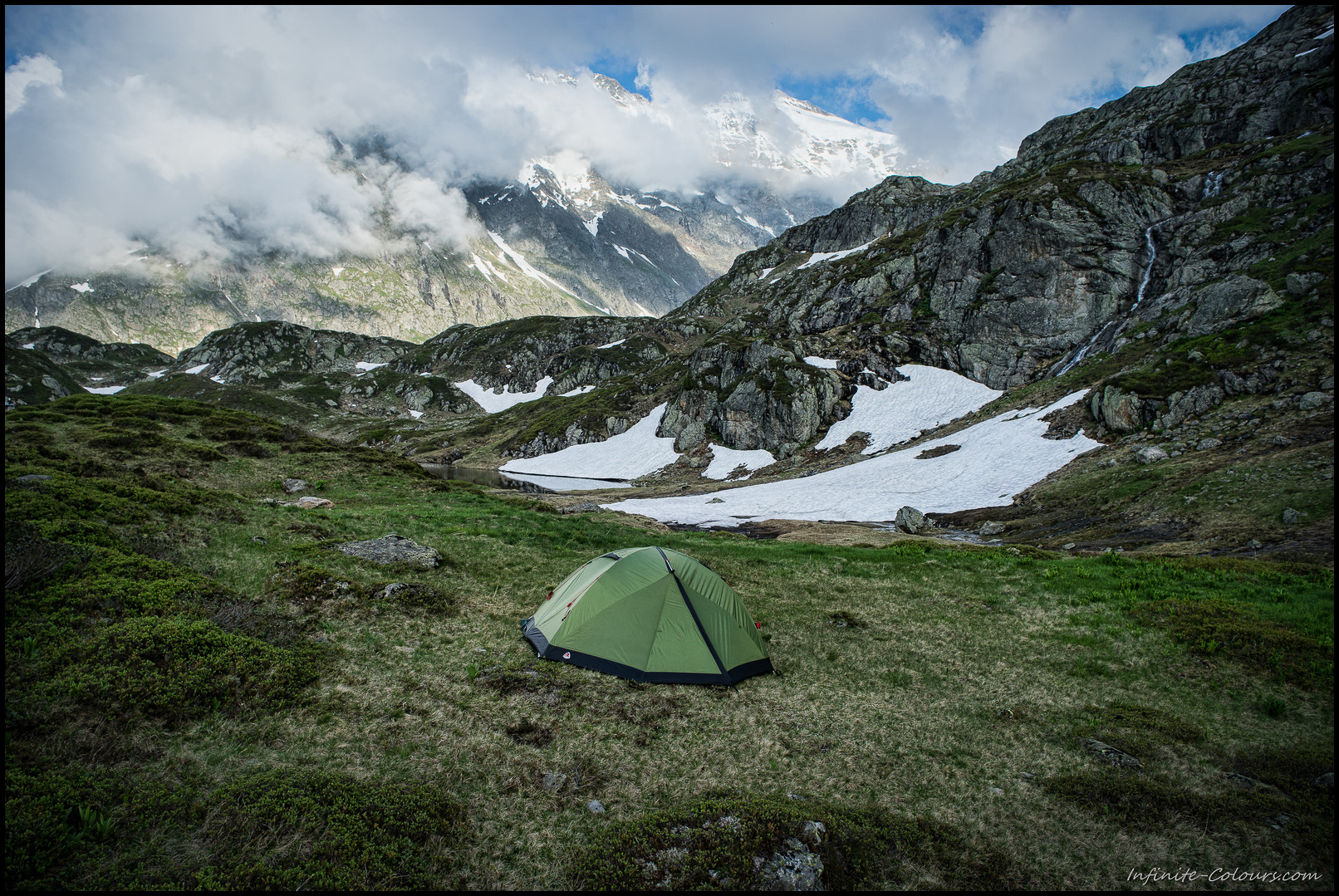
The morning started with glorious weather. The many streams of the spring runoff flowing down from the Taleggligrat and Giglistock turn the lower elevation areas into unique, almost swampy places. Water was literally everywhere.
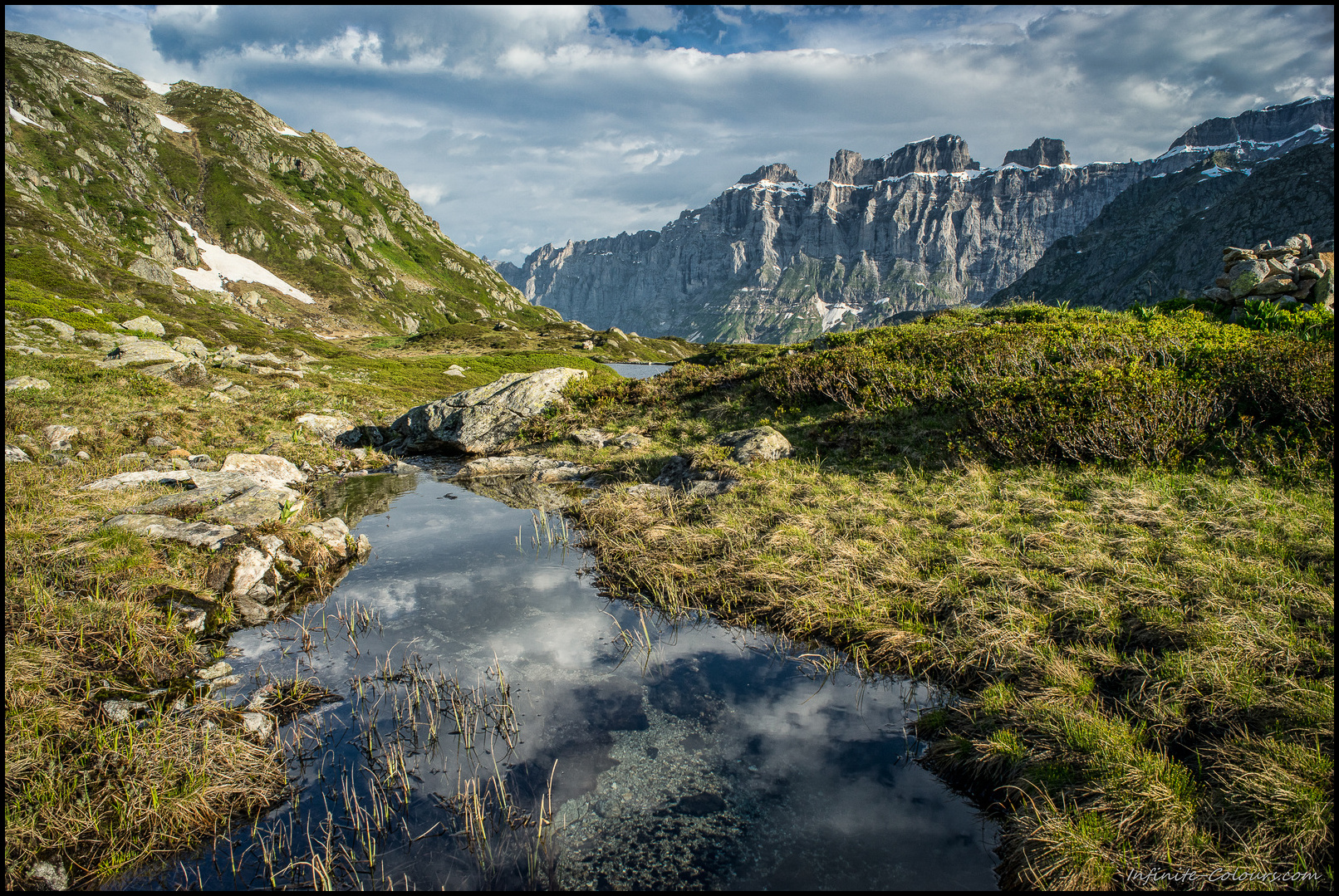
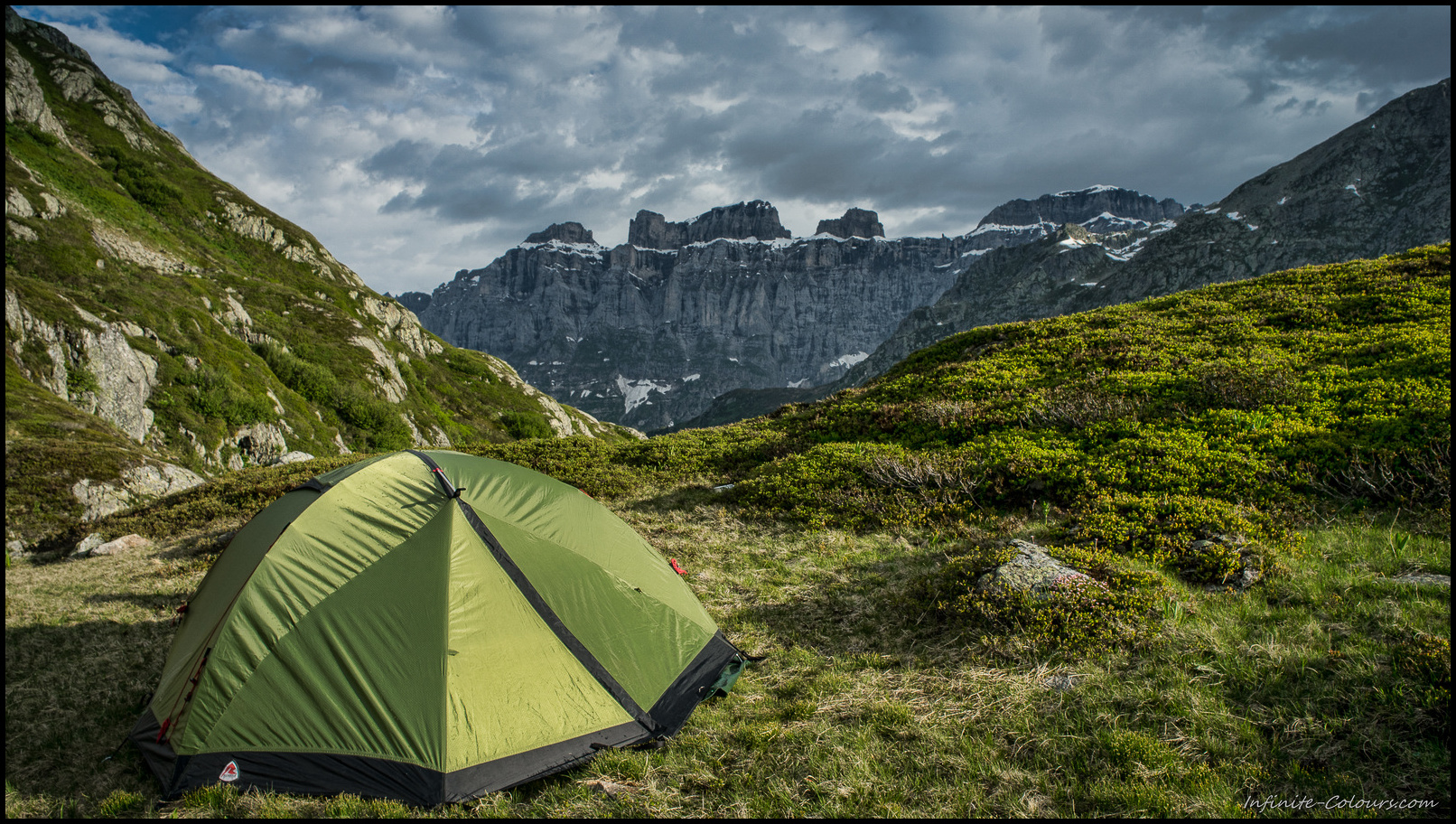
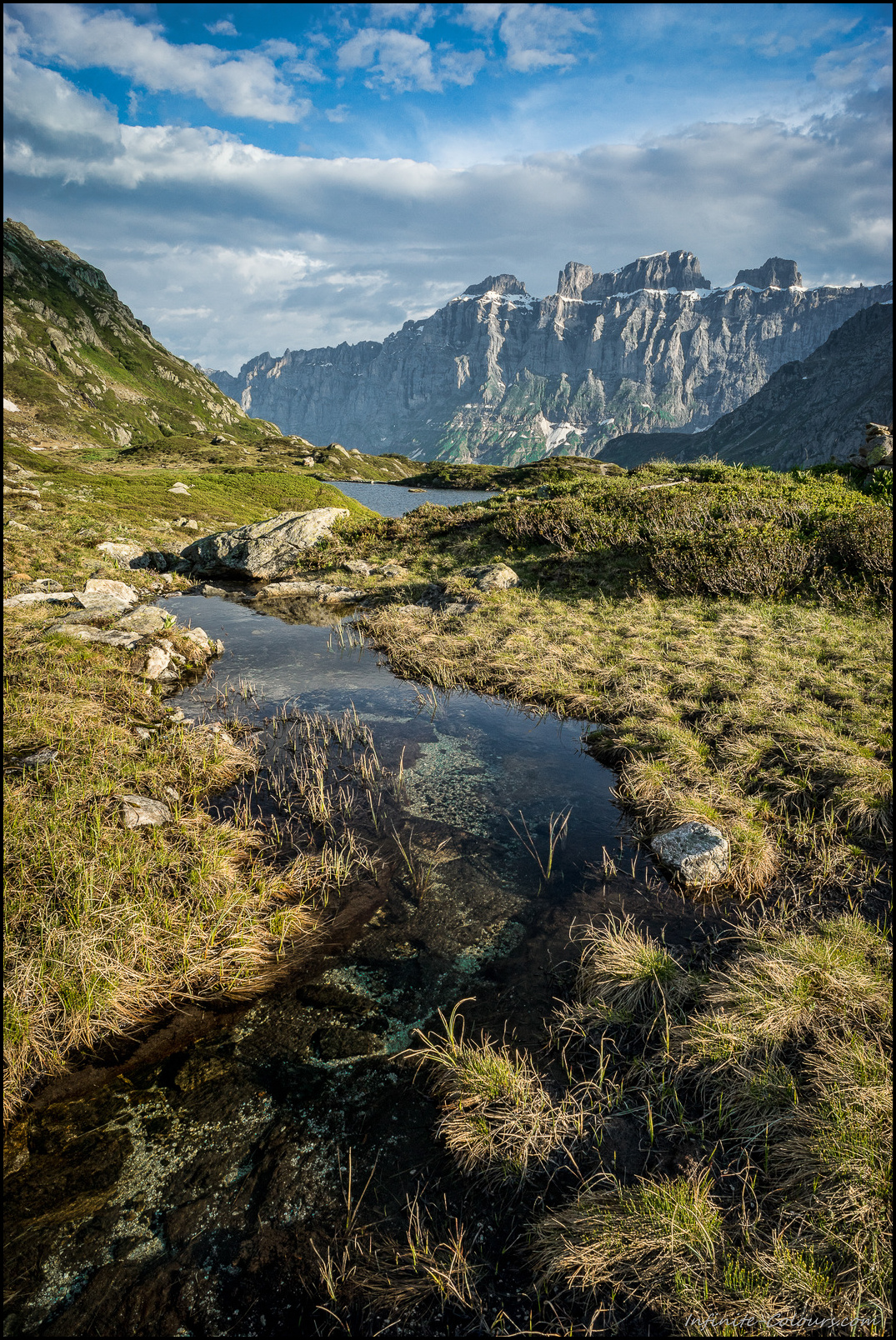
Soon, the clouds rolled in again but this just added to a very calm, mysterious atmosphere. It was pretty cool to watch the clouds rushing up the mountains in real good speed. Minutes later, it was like the whole scenery was wrapped in fog.
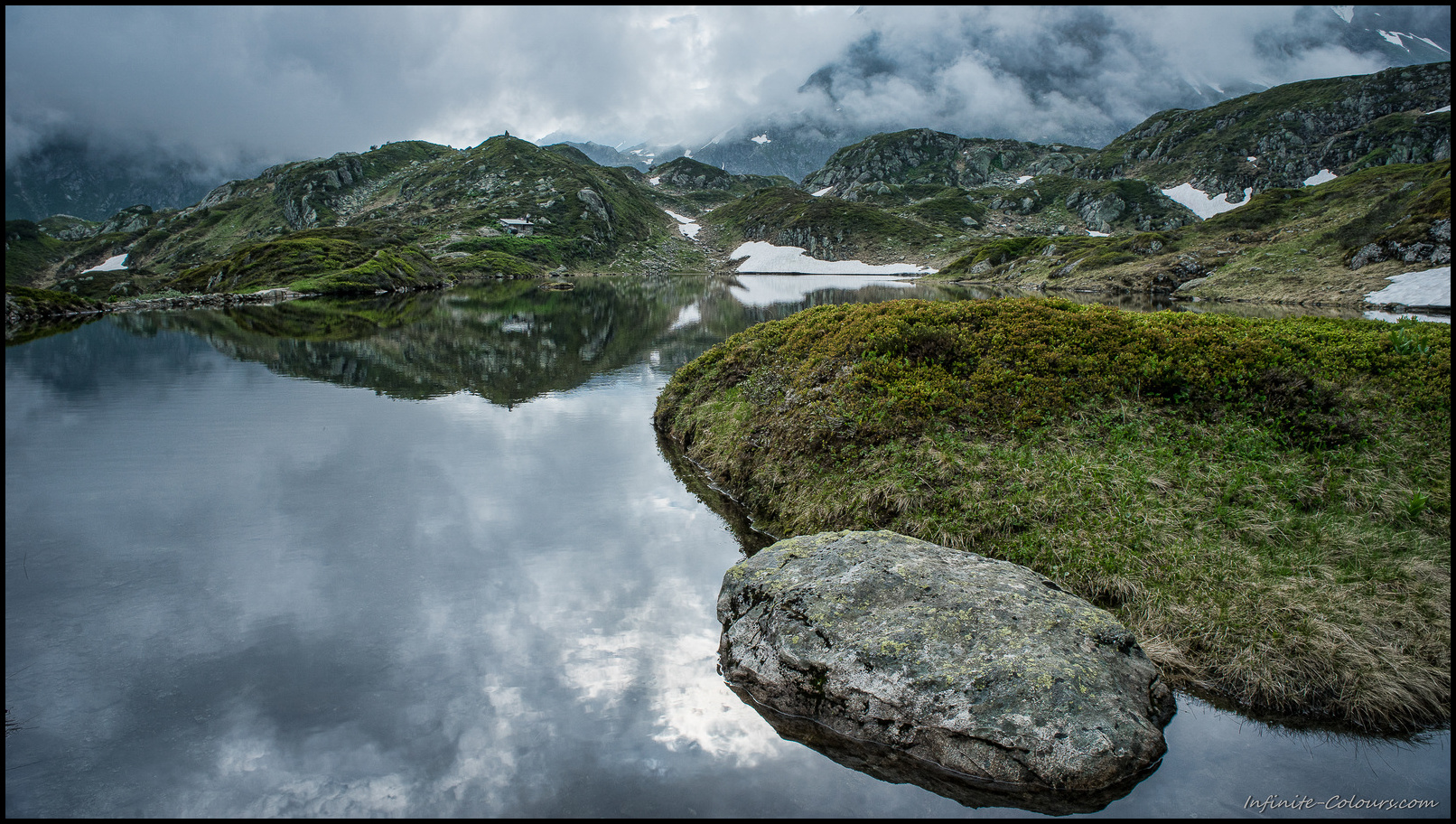
Lichen-covered rocks and tranquil ponds everywhere…
